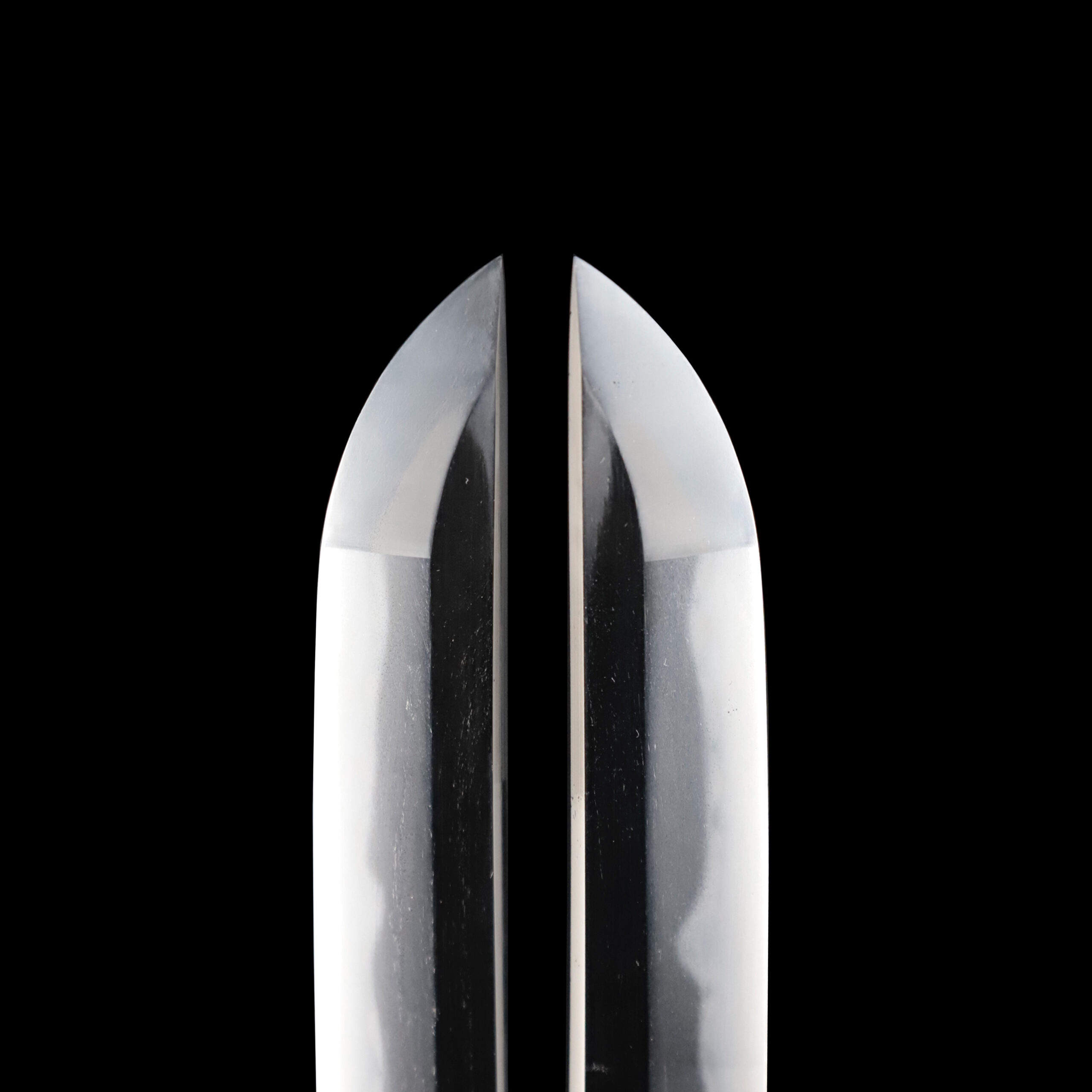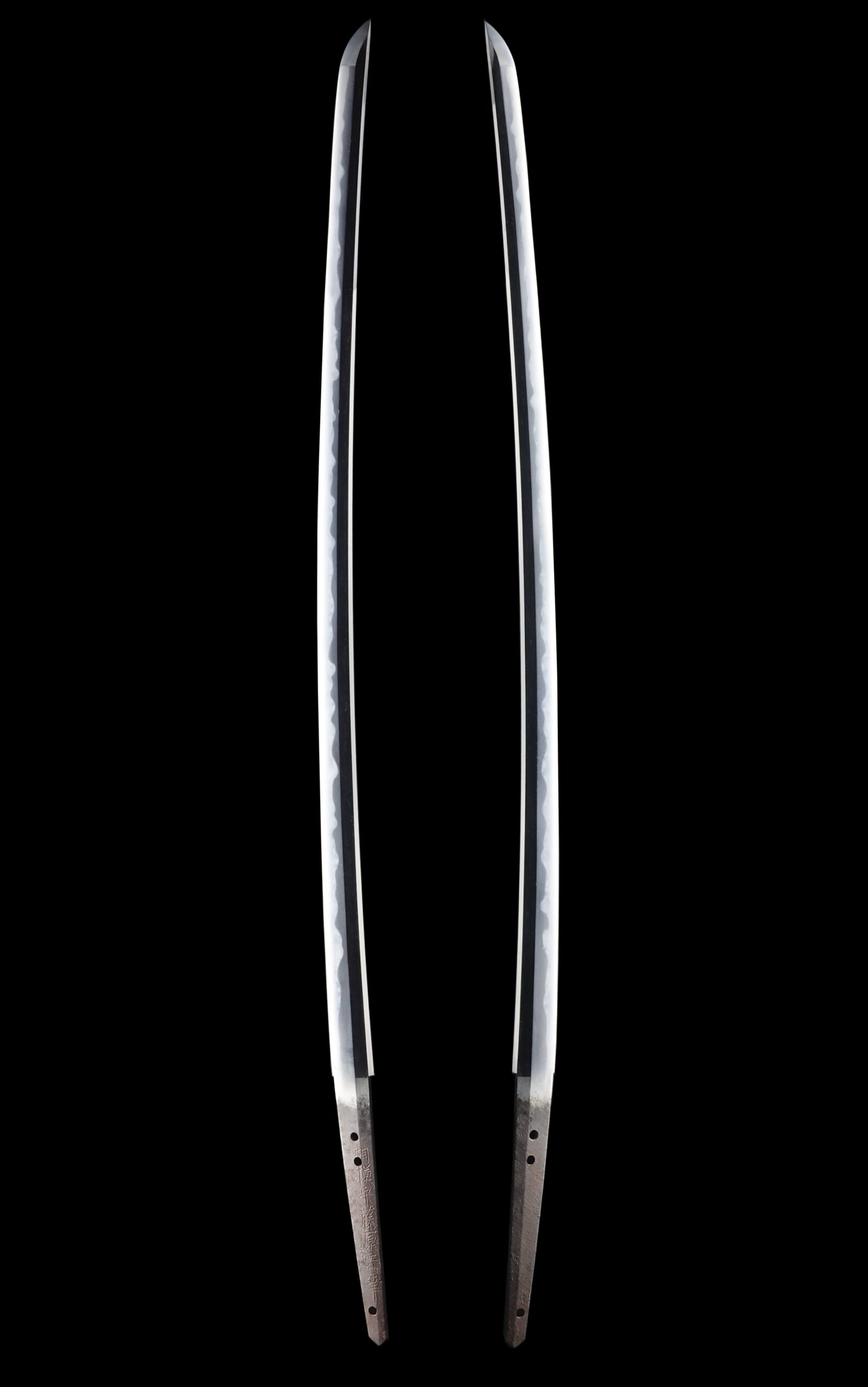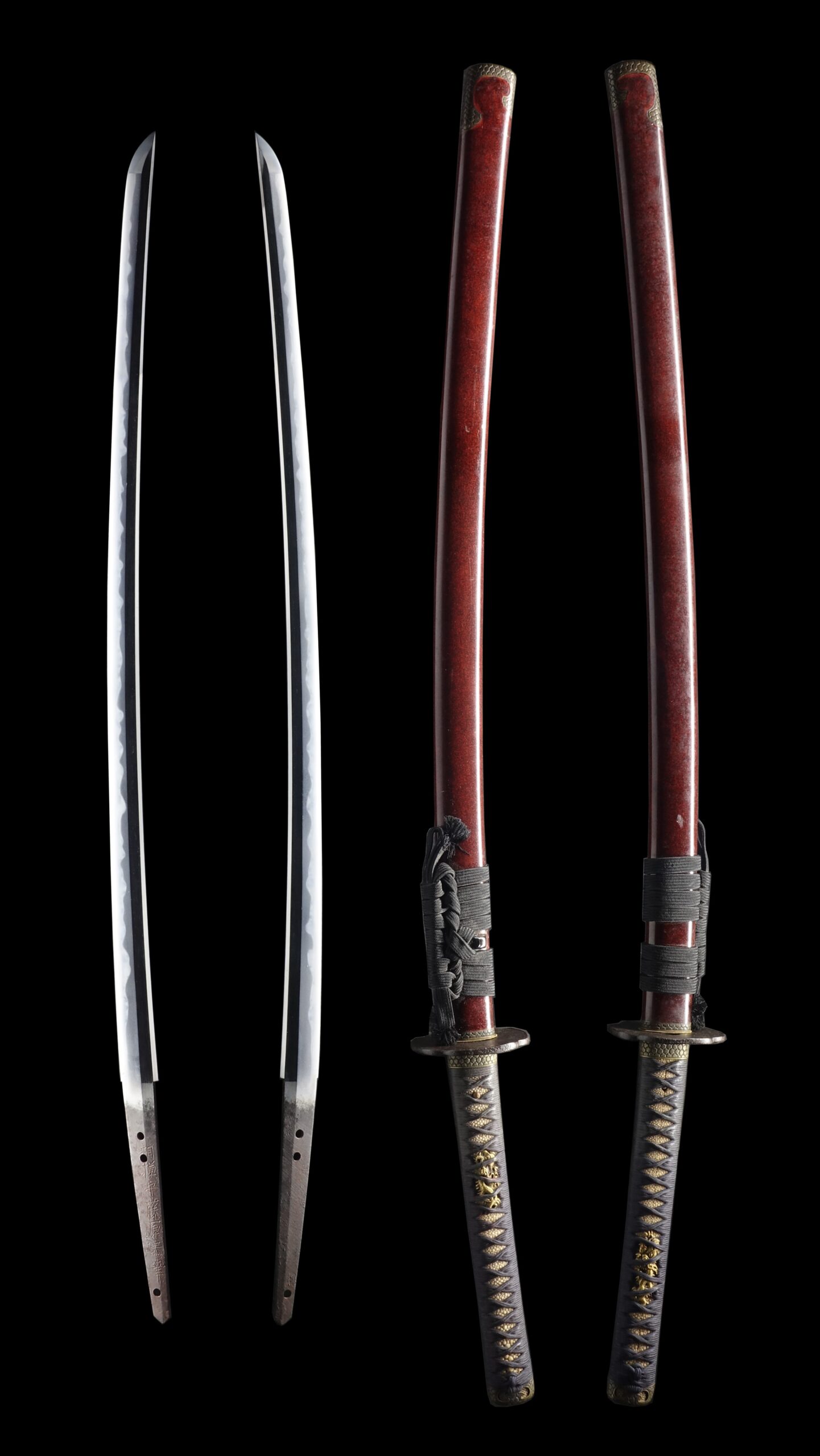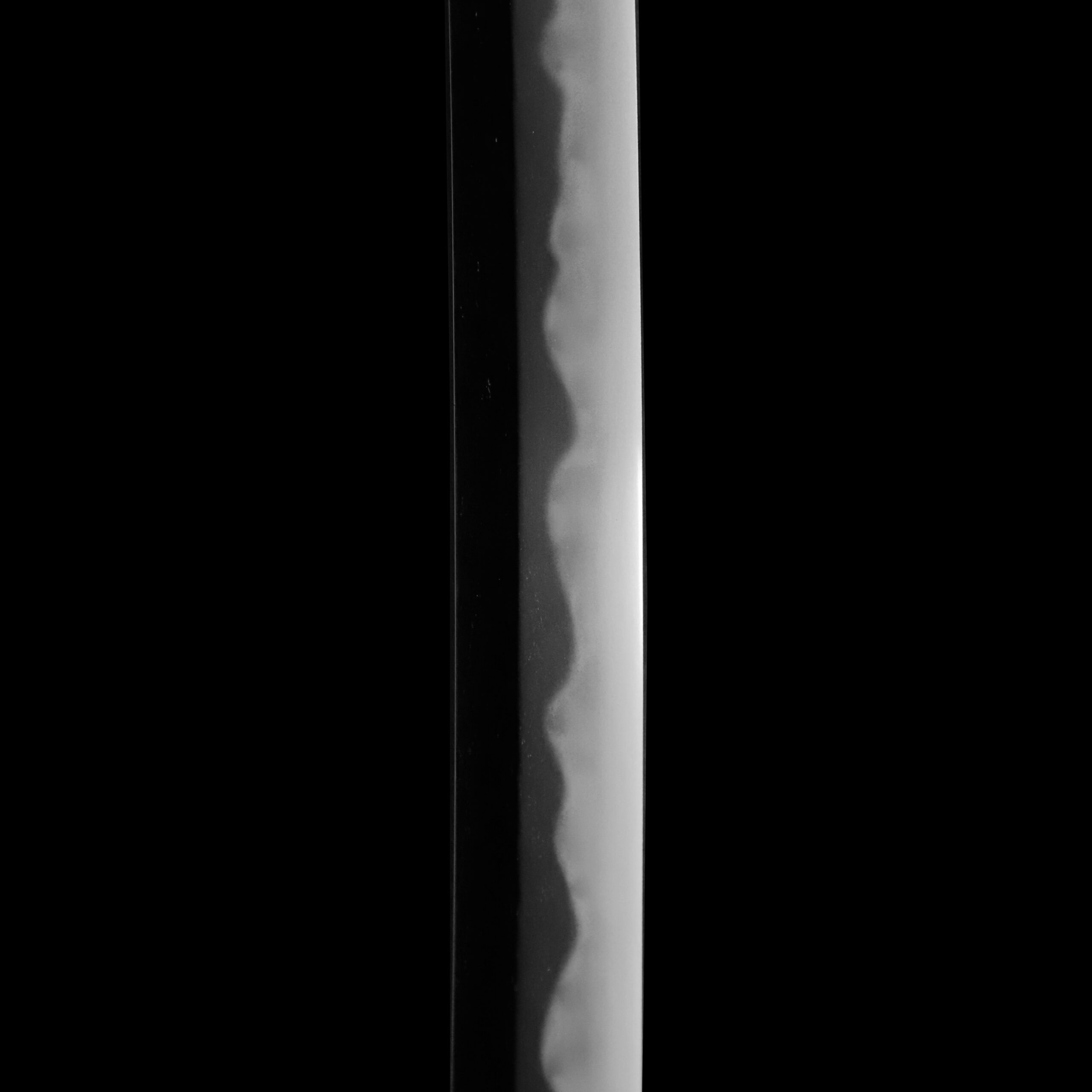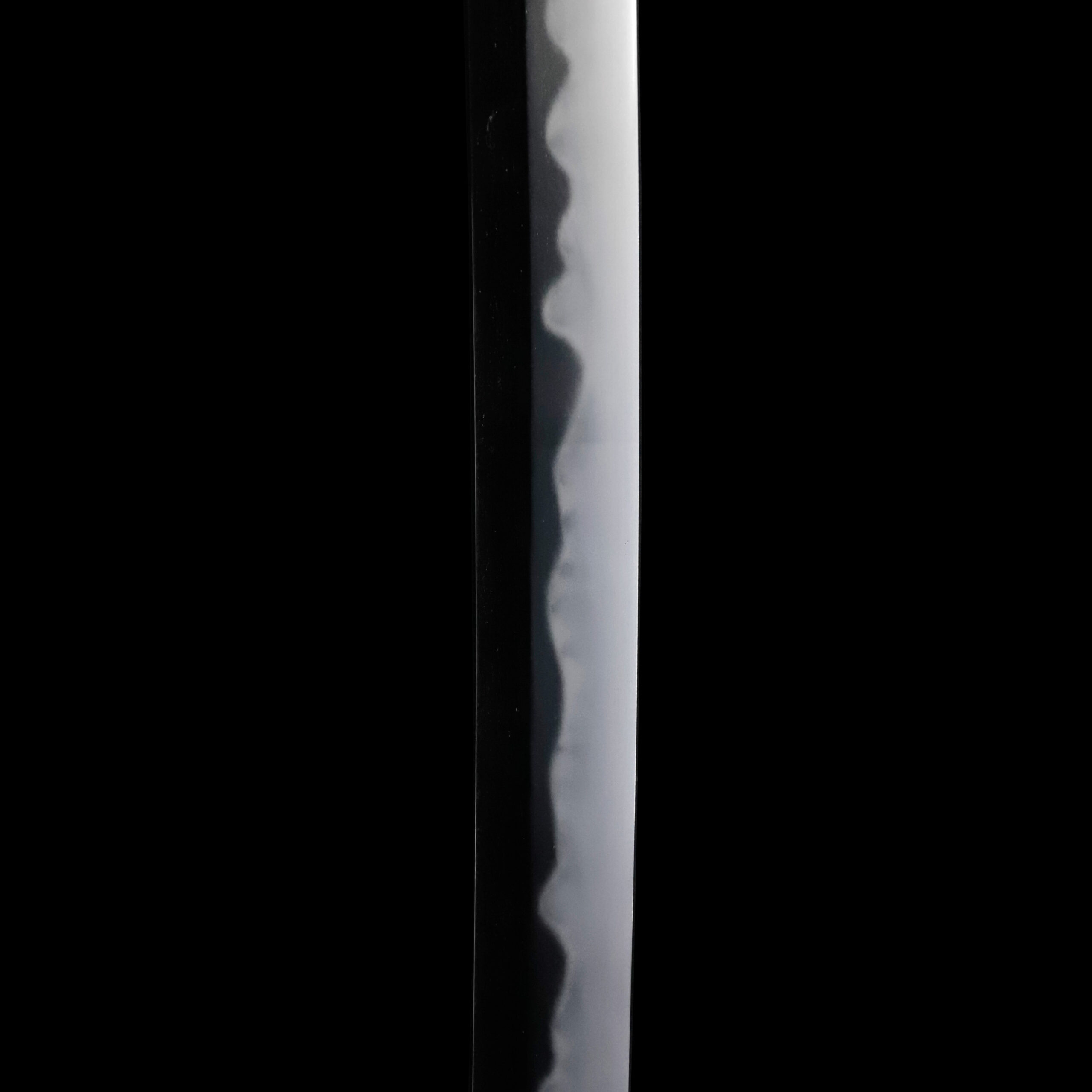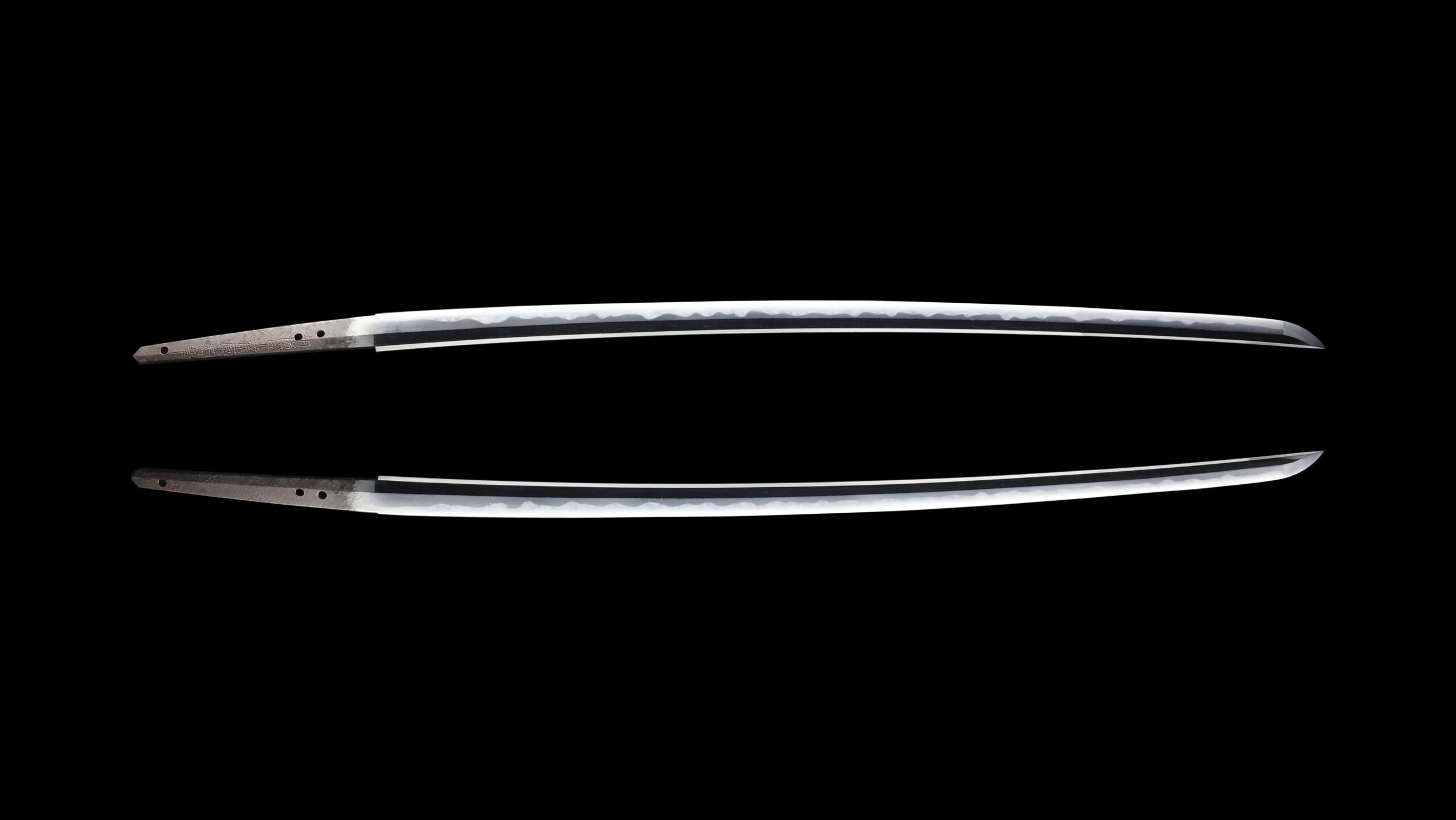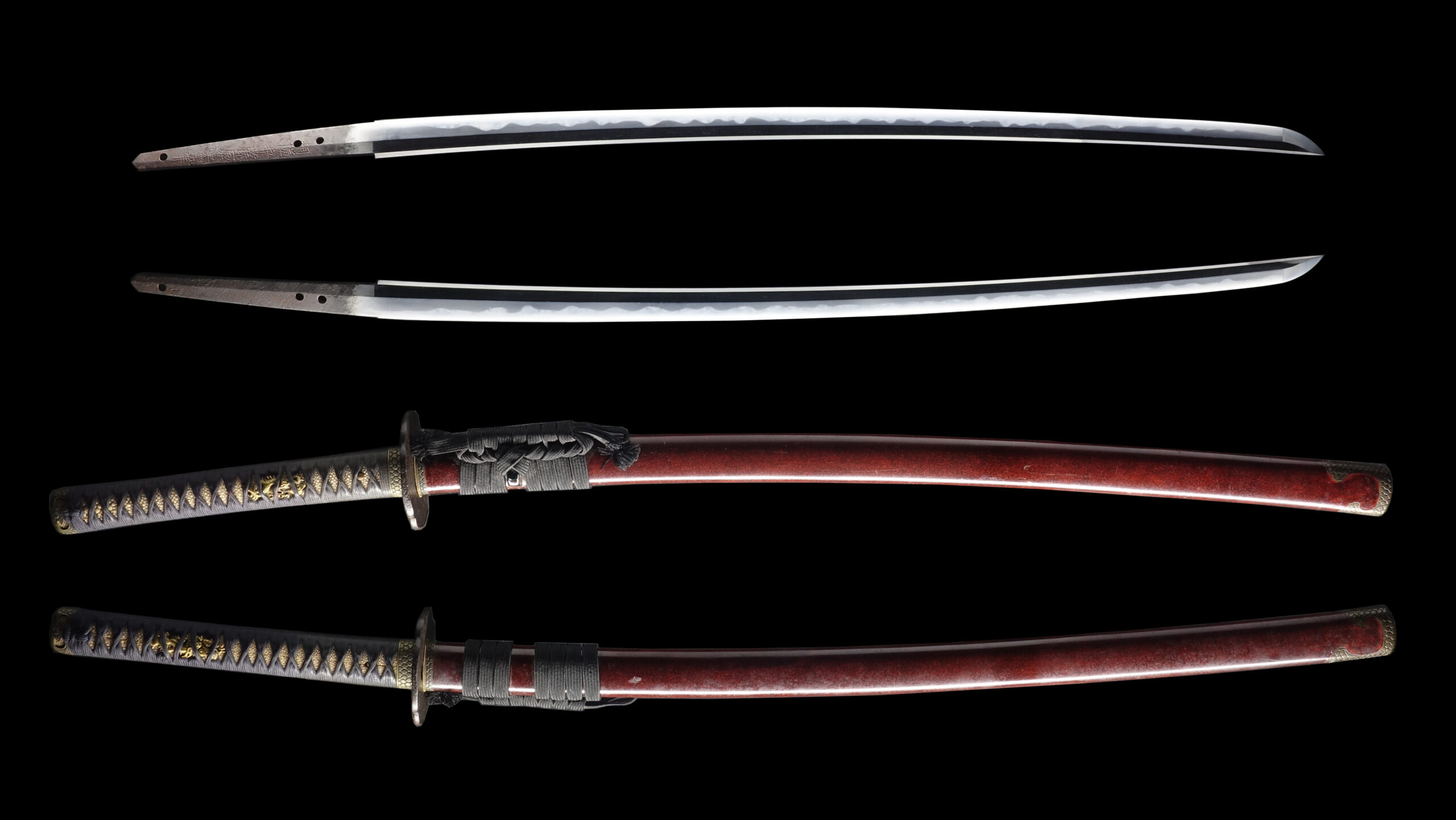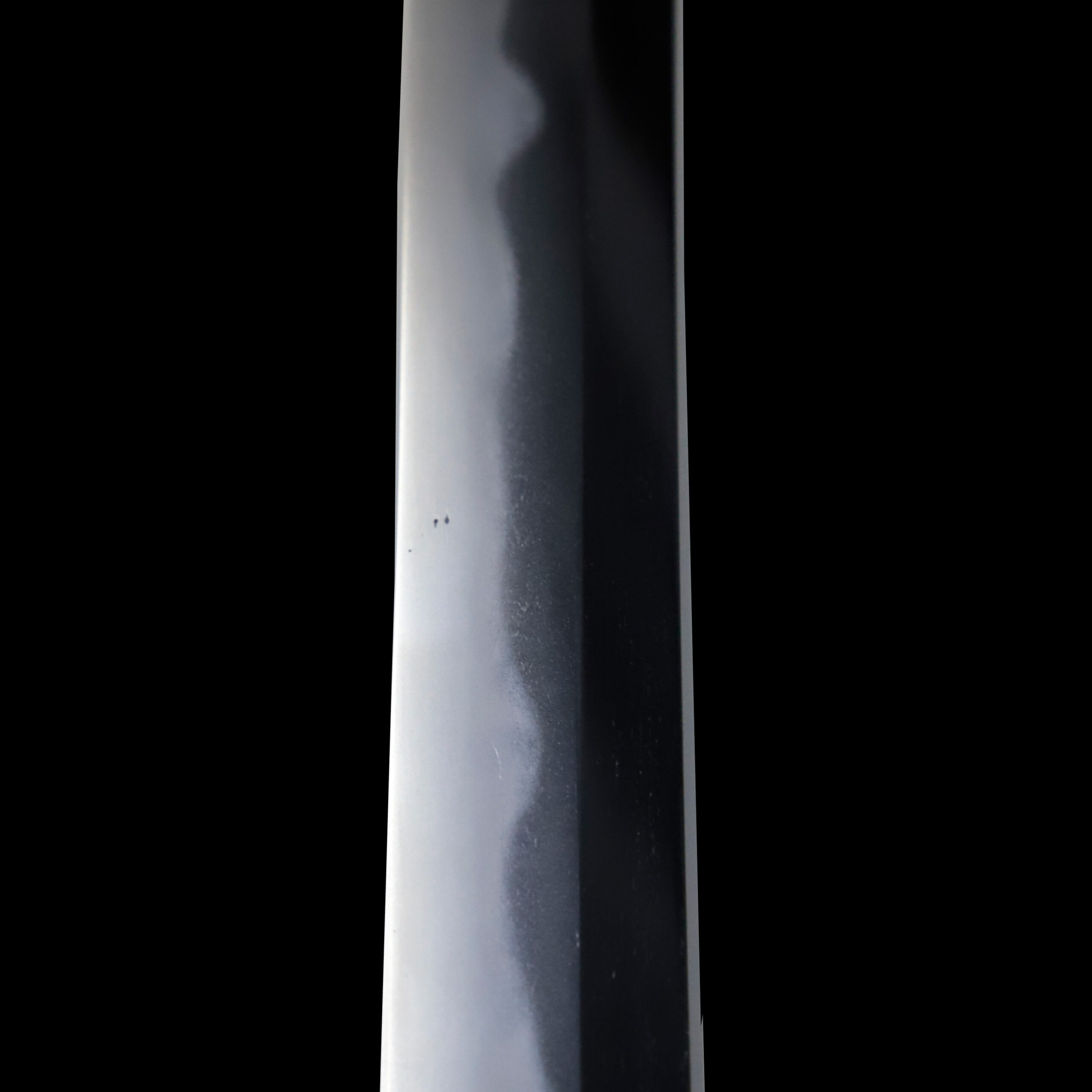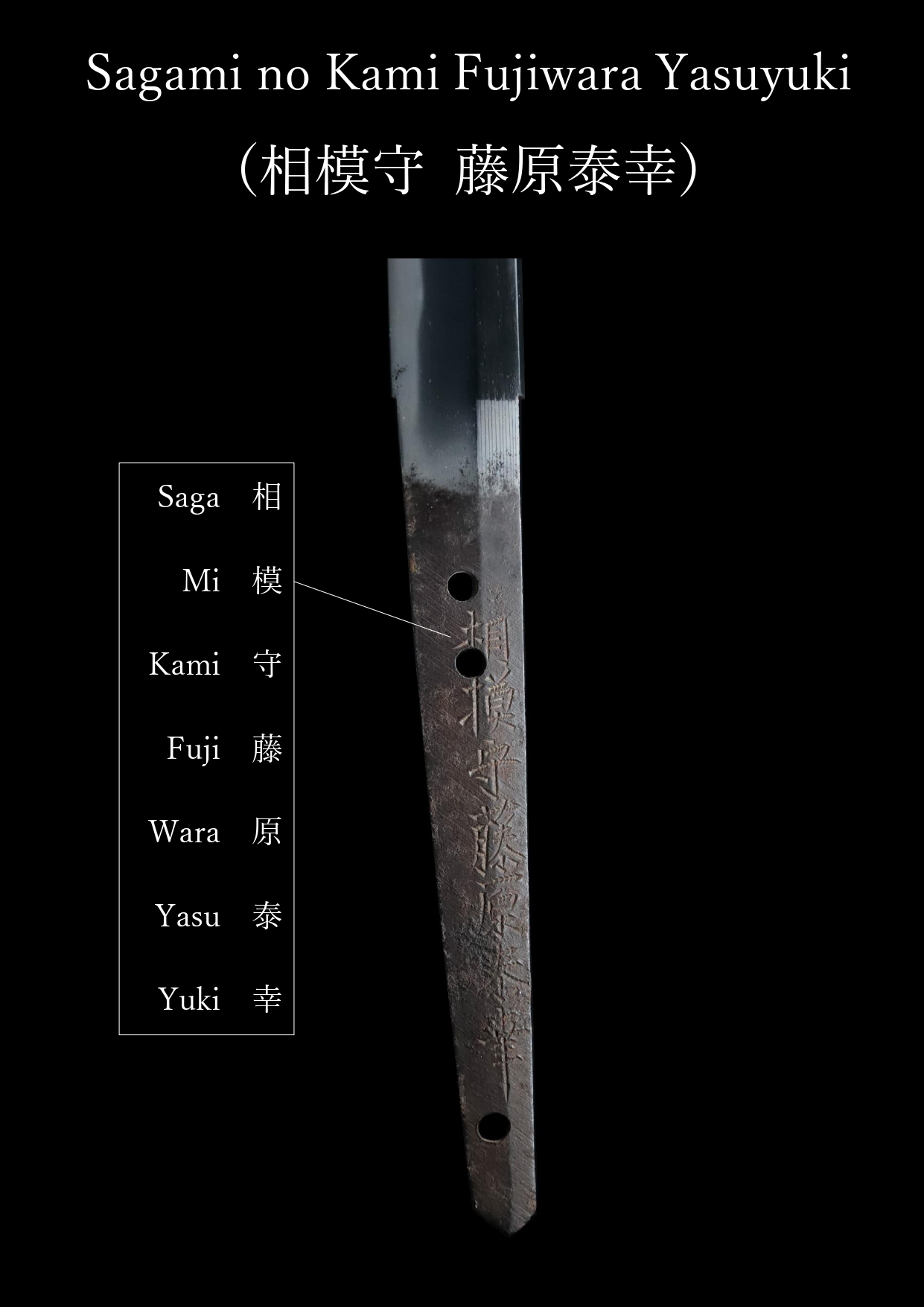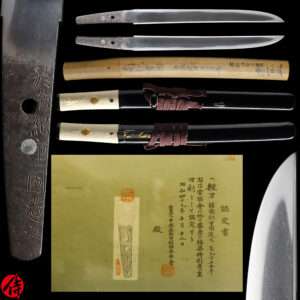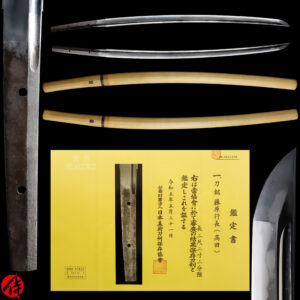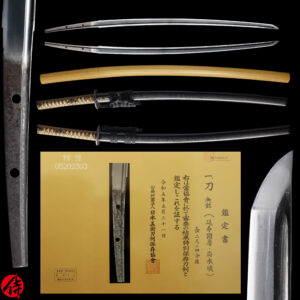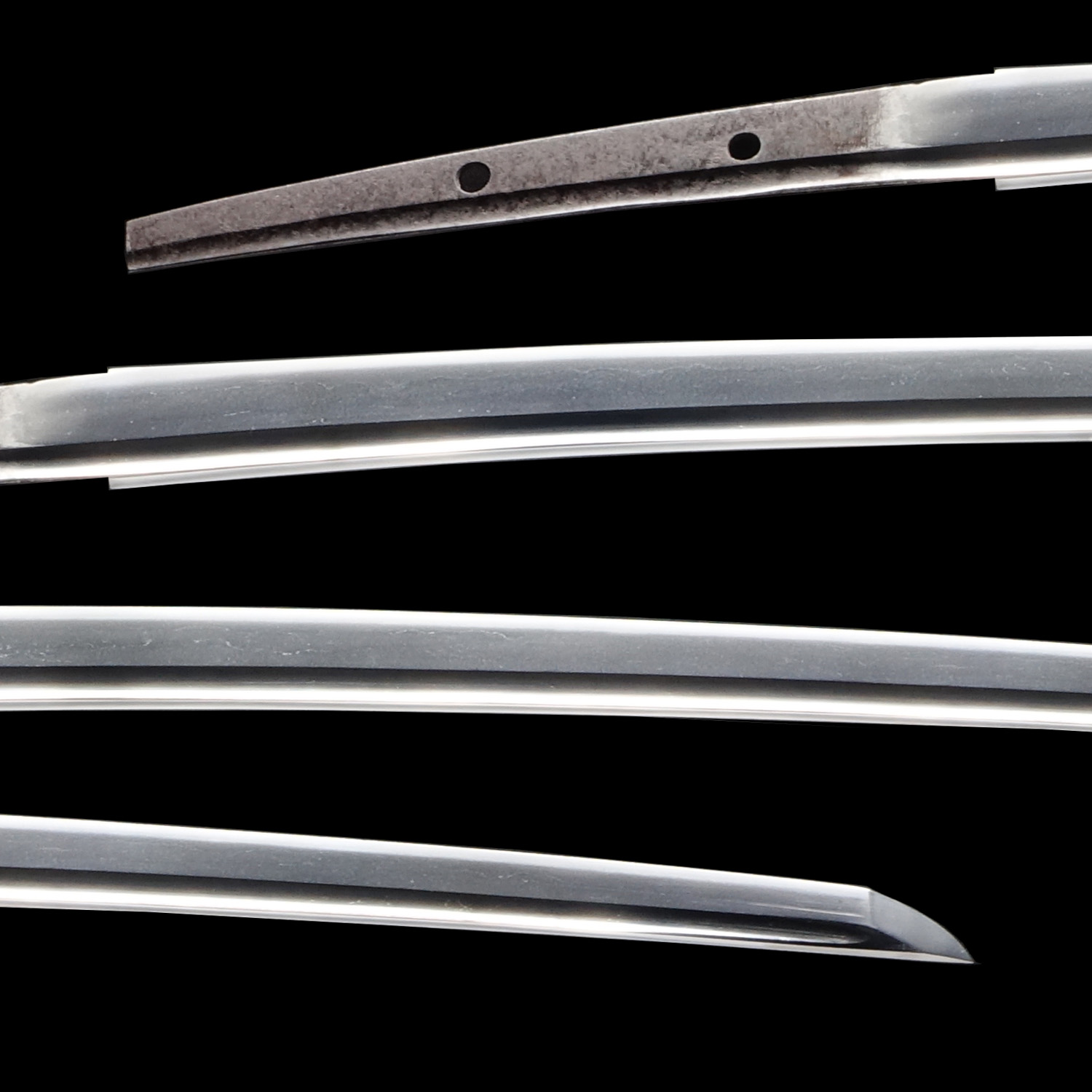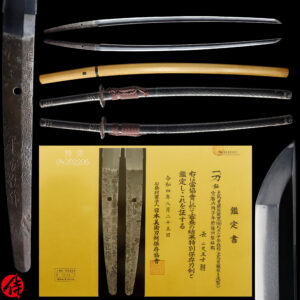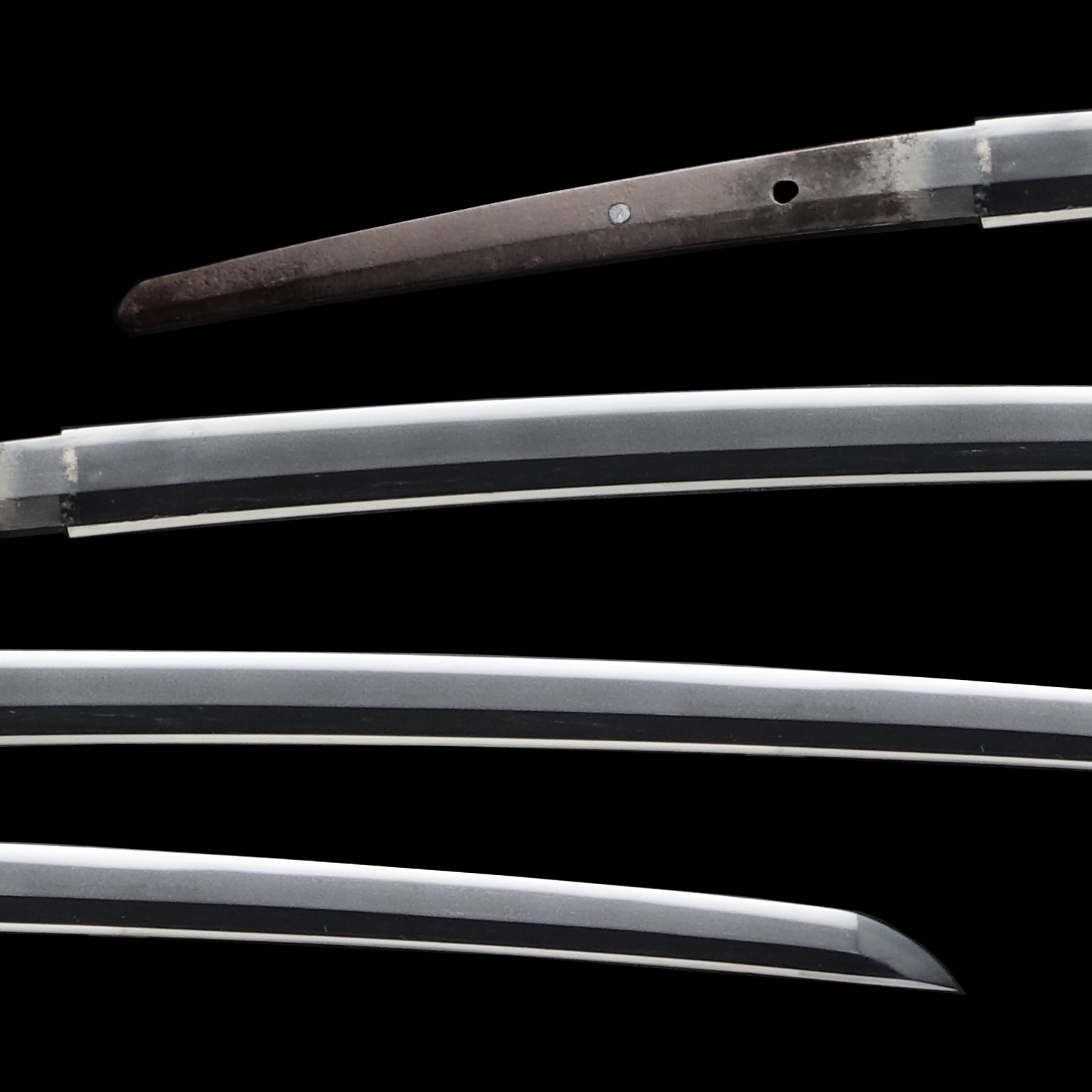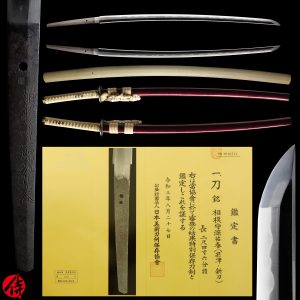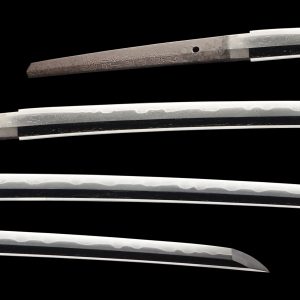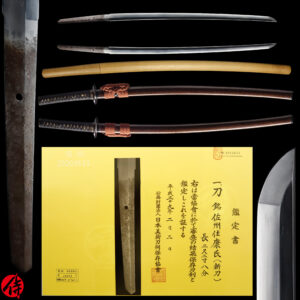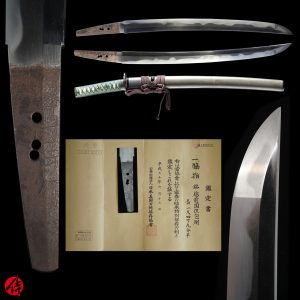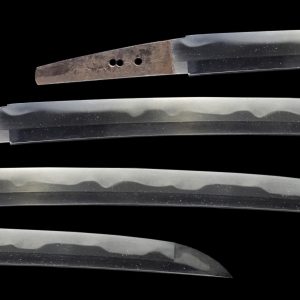Antique Japanese Sword Katana Signed by Yasuyuki with Tokubetsu Hozon Certificate
【Description】
This blade was signed by Sagami no Kami Fujiwara Yasuyuki (相模守藤原泰幸) . He is a prominent swordsmith, also known as the son of Noto no Kami Fujiwara Yasuyuki (能登守藤原泰幸). He was active during the early Edo period (1673-1684) .
Yasuyuki was originally from the Mino province (today’s Gifu prefecture). However, he moved to Owari province (Today’s Aichi prefecture) to look for better job opportunities. Owari province was active in martial arts during the early Edo period. And there was much demand for swords among high-class Samurai living there. Yasuyuki met those demands by forging excellent quality blades.
As Owari province was active in martial arts during the early Edo period, there was much demand for swords among high-class Samurai. And there were quite a few renowned swordsmiths in Owari province, but many of them only forged blades for the Owari domain. Owari domain was known as Tokugawa Gosanke (徳川御三家) and had powerful political power, closely connected to Tokugawa Shogunate in Edo city. We assume this blade was originally made for a high-class Samurai in Owari province.
Yasuyuki received the honorable official title of Sagami no Kami from the emperor for his superb sword-forging techniques after he moved to Owari province.
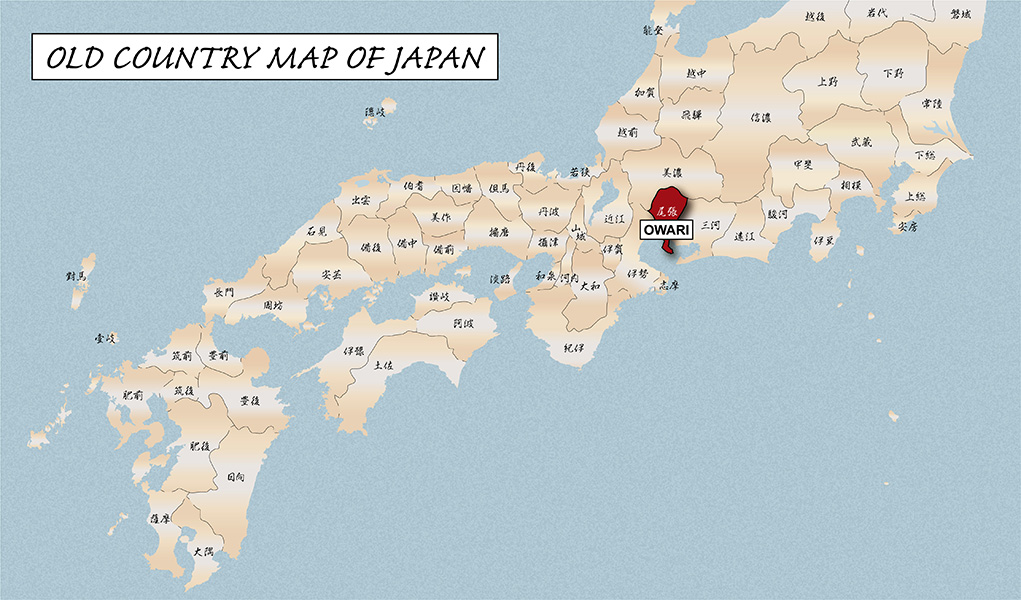
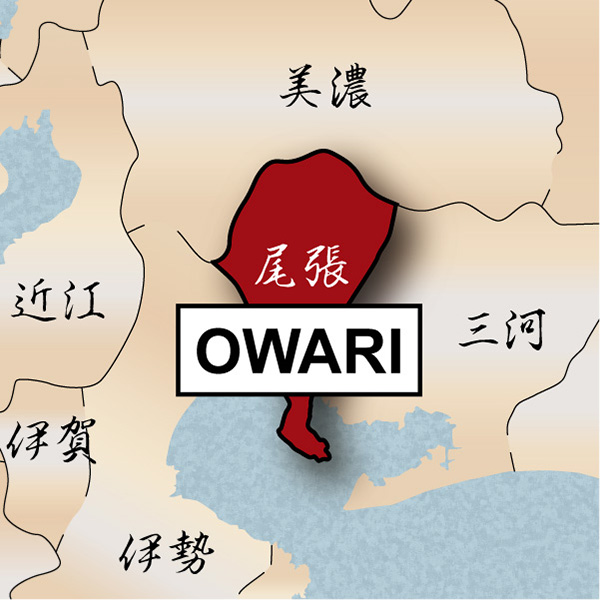
Mino Province
Mino Province is one of the most famous and historical sword-forging sites. There were so many schools forging blades during the Samurai period. It especially prospered during Sengoku Jidai(Warring State period) due to the high demand for weapons. And the location of Mino province beat others. Akechi Mitsuhide controlled Mino province, Nobunaga Oda ruled Owari province, and Tokugawa Ieyasu was the lord of Suruga (Neighboring areas). There was high demand from those powerful feudal lords and their retainers.
Furthermore, many wars occurred between the Kanto region and the Kyoto area. Mino is located in the middle, making feudal lords feel convenient to order swords from MINO swordsmiths. Many feudal lords demanded swords forged in the Mino province. The blades forged in MINO provinces also had a reputation for their practical design and sharpness.
The tradition of excellent sword forging skills had been passed throughout the Edo period, and Yasuyuki is a good example. And, to look for better opportunities, many swordsmiths in Mino province moved to other parts of Japan, such as Owari province, located right next to Mino province. Those who moved to Owari from Mino are called Owari Seki. Yasuyuki is one of the most famous Owari Seki swordsmiths. Others are Masatsune (政常)、Ujifusa (氏房), and Nobutaka (信高). We are confident you can appreciate the outstanding craft of Yasuyuki.
It is appraised as a Tokubetsu Hozon Token(特別保存刀剣) issued by NBTHK(Nihon Bijutsu Touken Hozon Kyokai:日本美術刀剣保存協会). This authentication paper was only given to authentic Japanese swords, especially well preserved and high quality with artistic value.
【 Blade】
Cutting Edge Length(Nagasa):75.2 cm (29.6 inches)
Curvature(Sori):1.7 cm (0.67 inches)

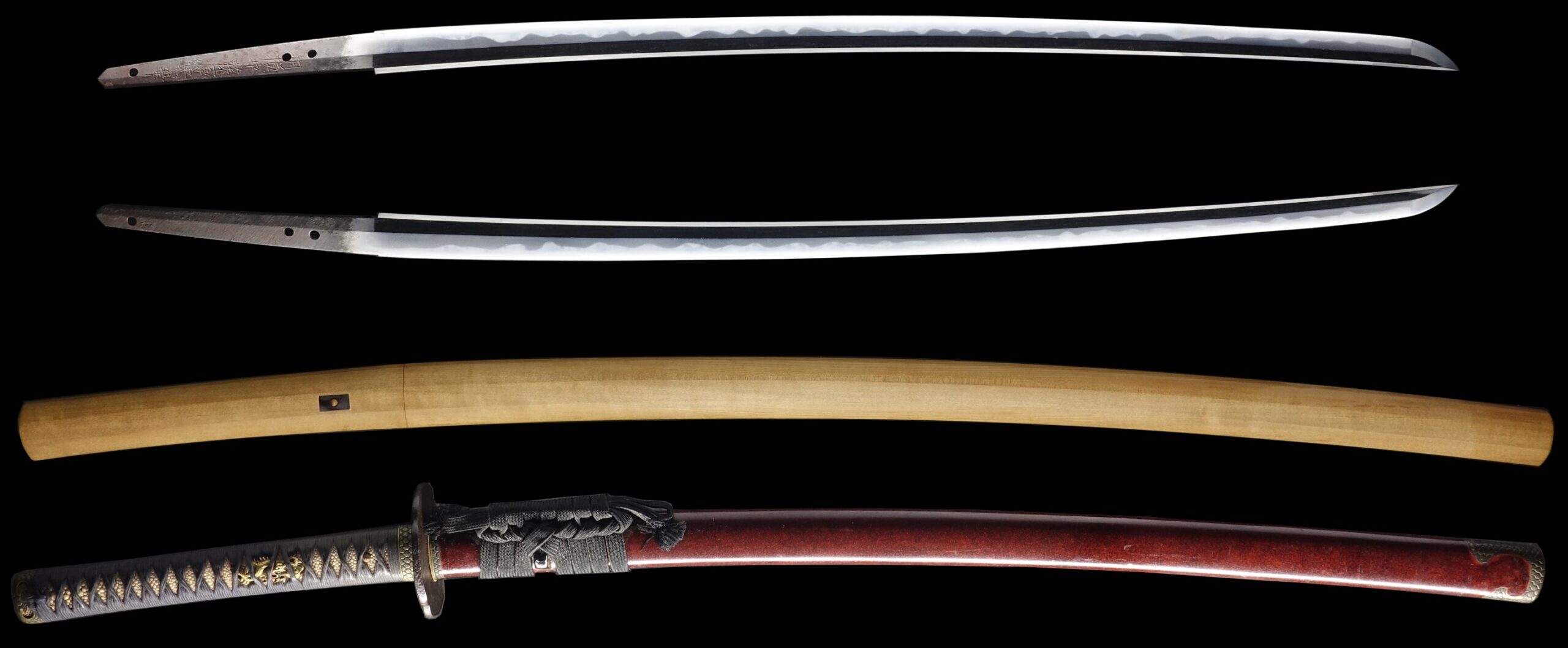
Hamon:
The crystalline structure which forms along the cutting edge of a blade as a result of the hardening process
Jimon(Jihada):
visible steel surface pattern created by folding and hammering during forging process
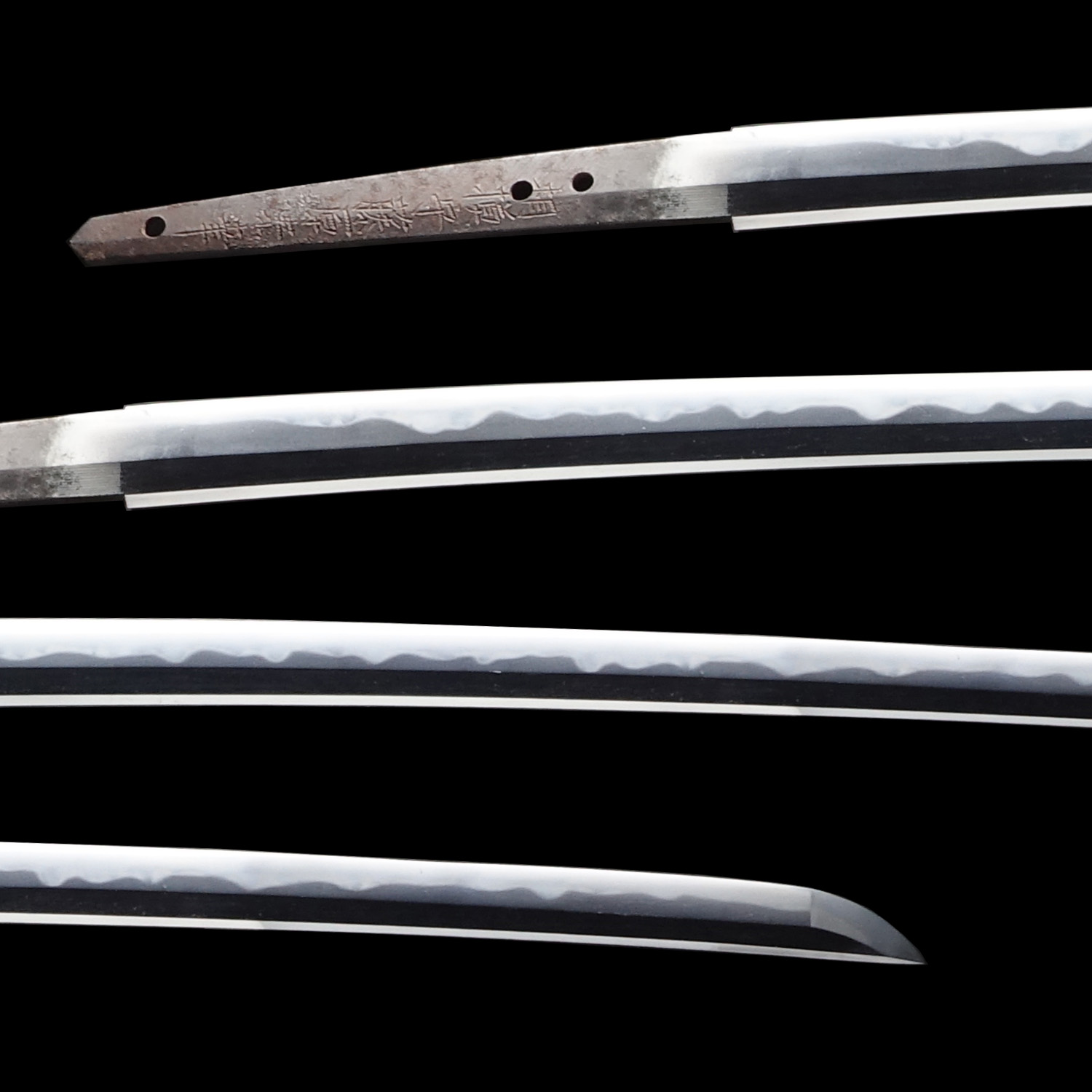
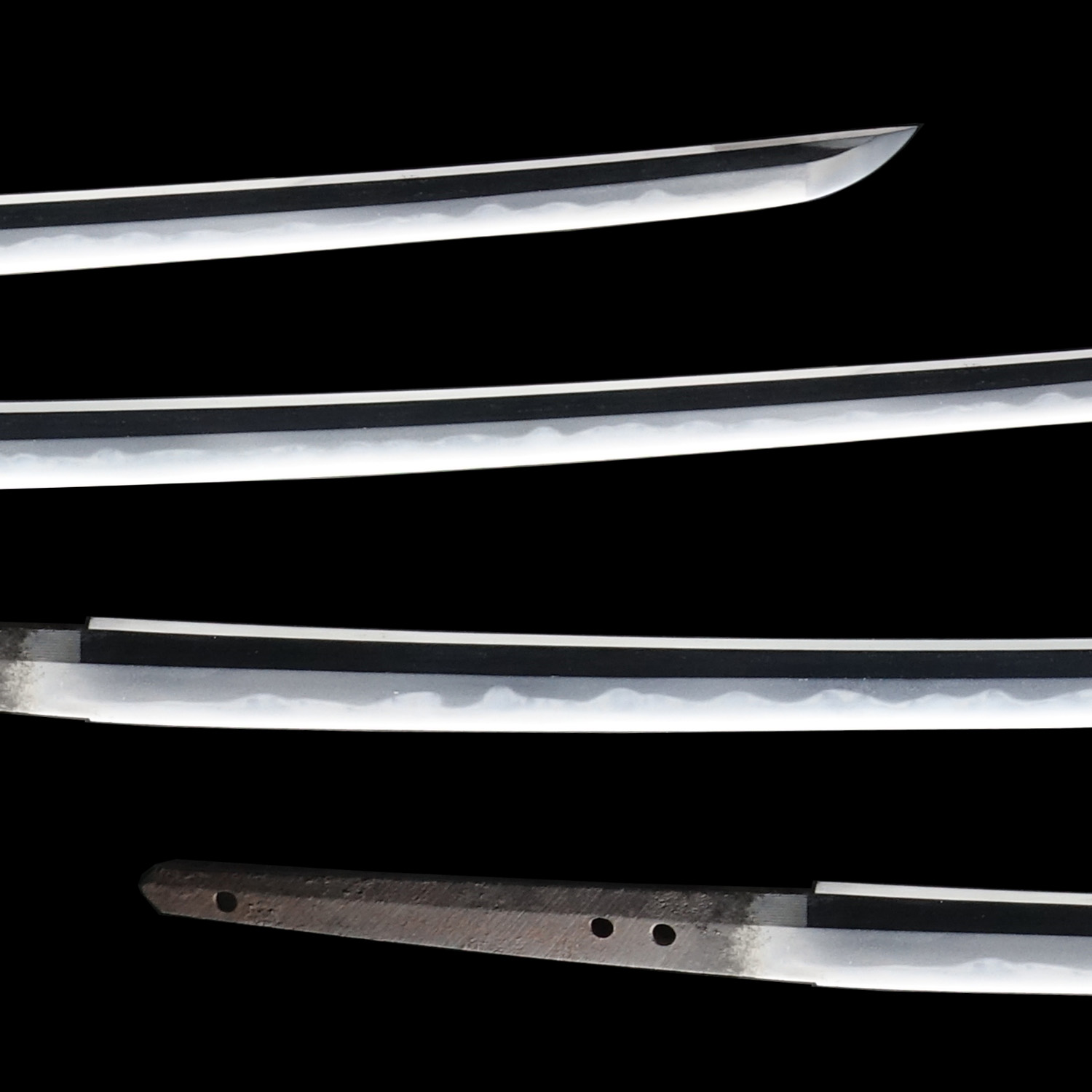
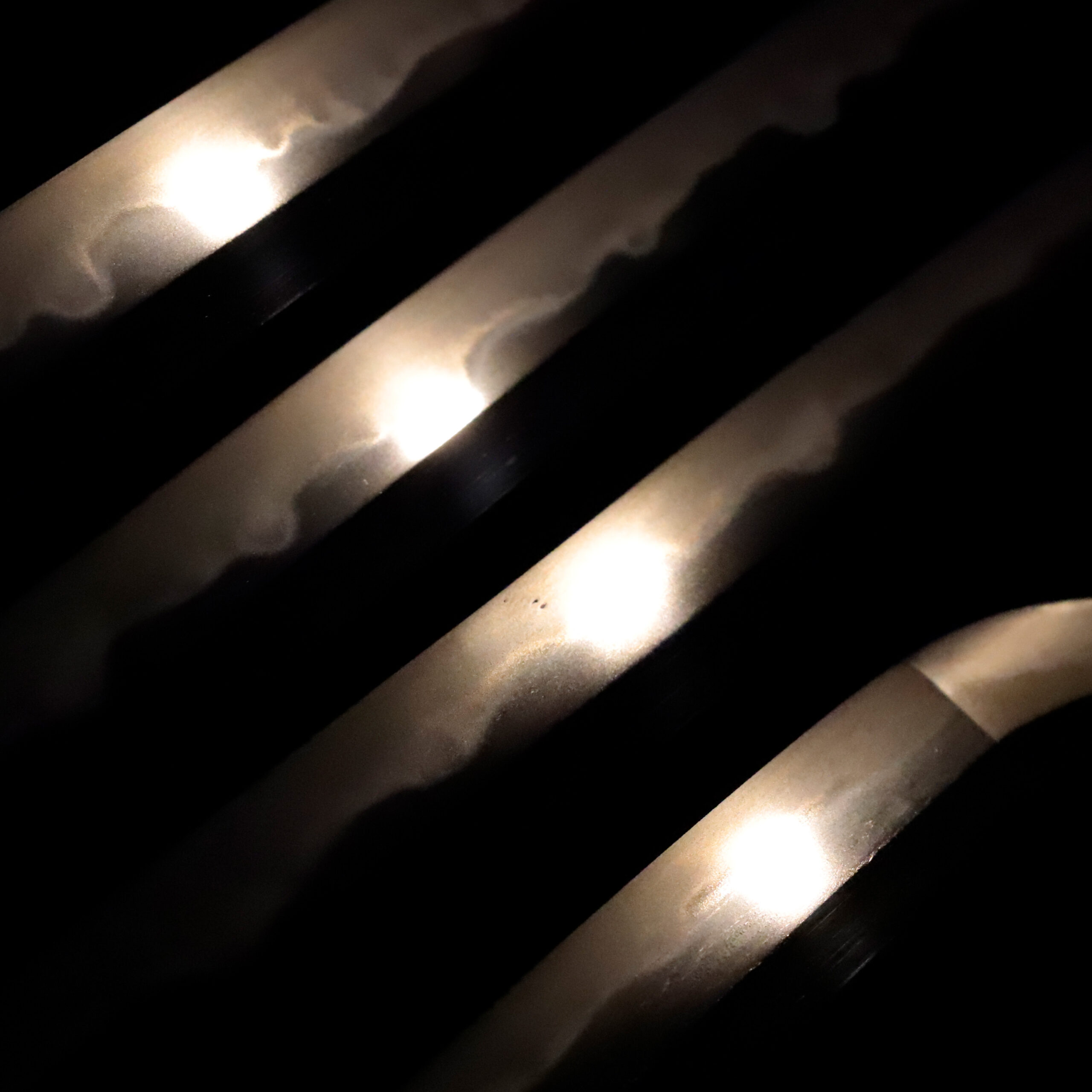
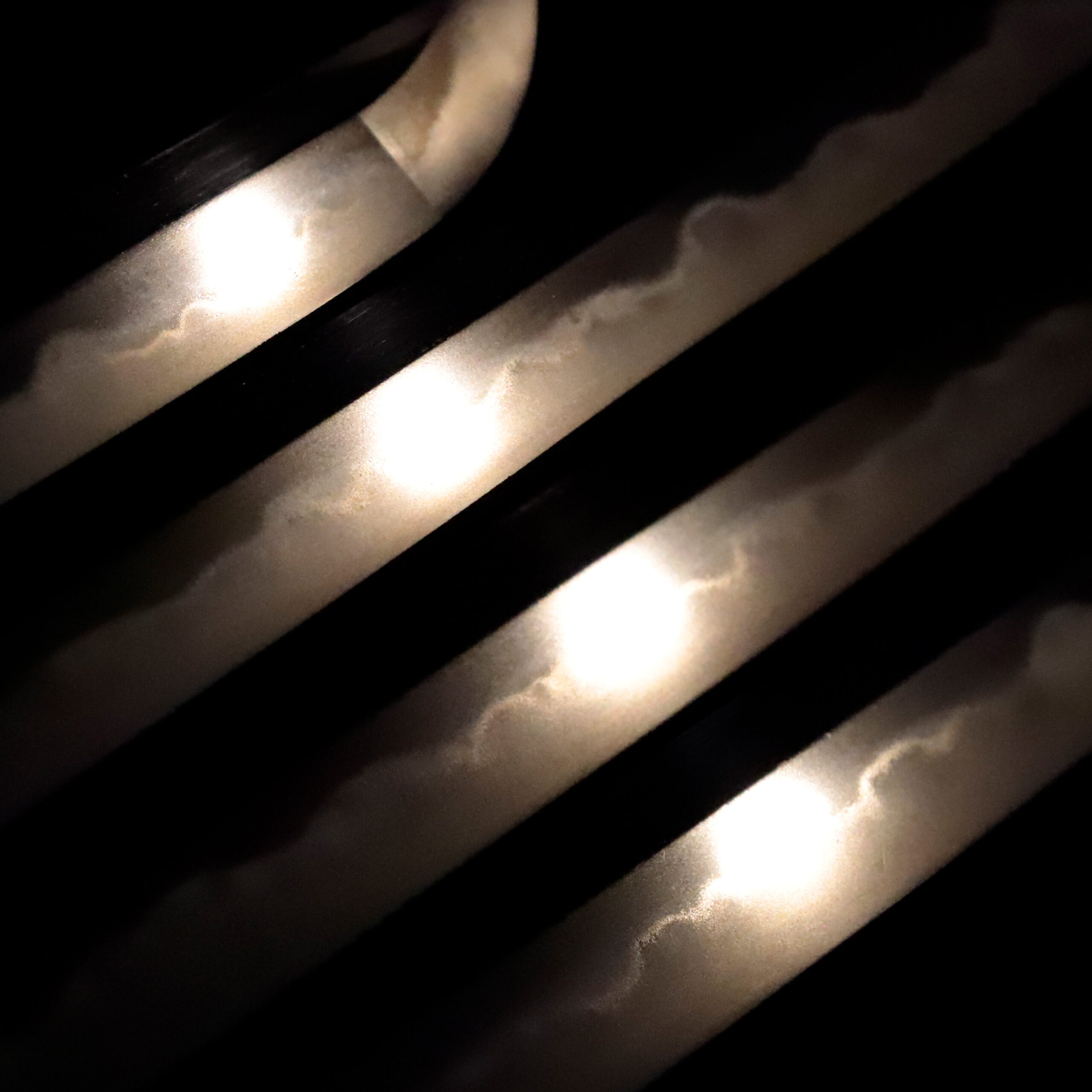
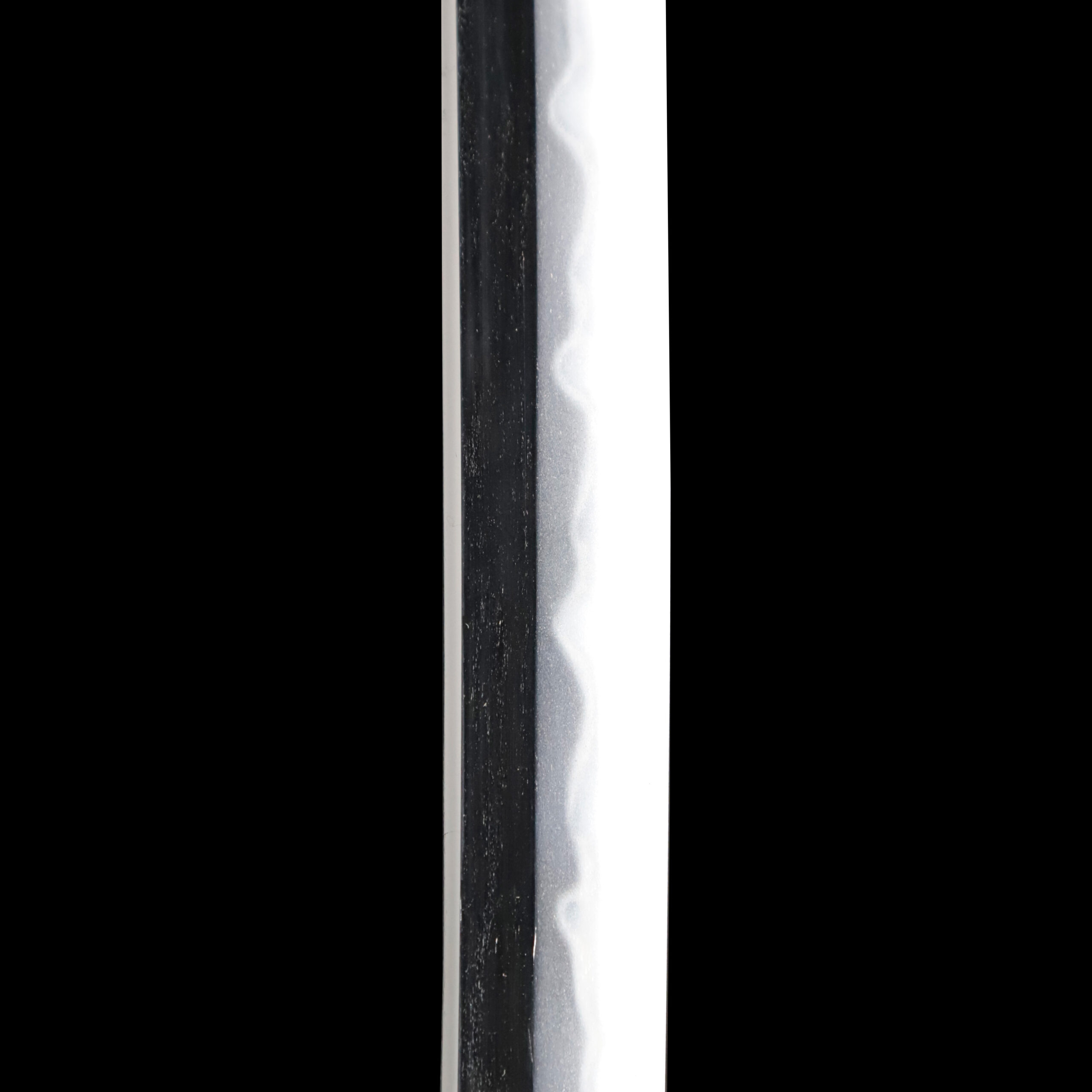
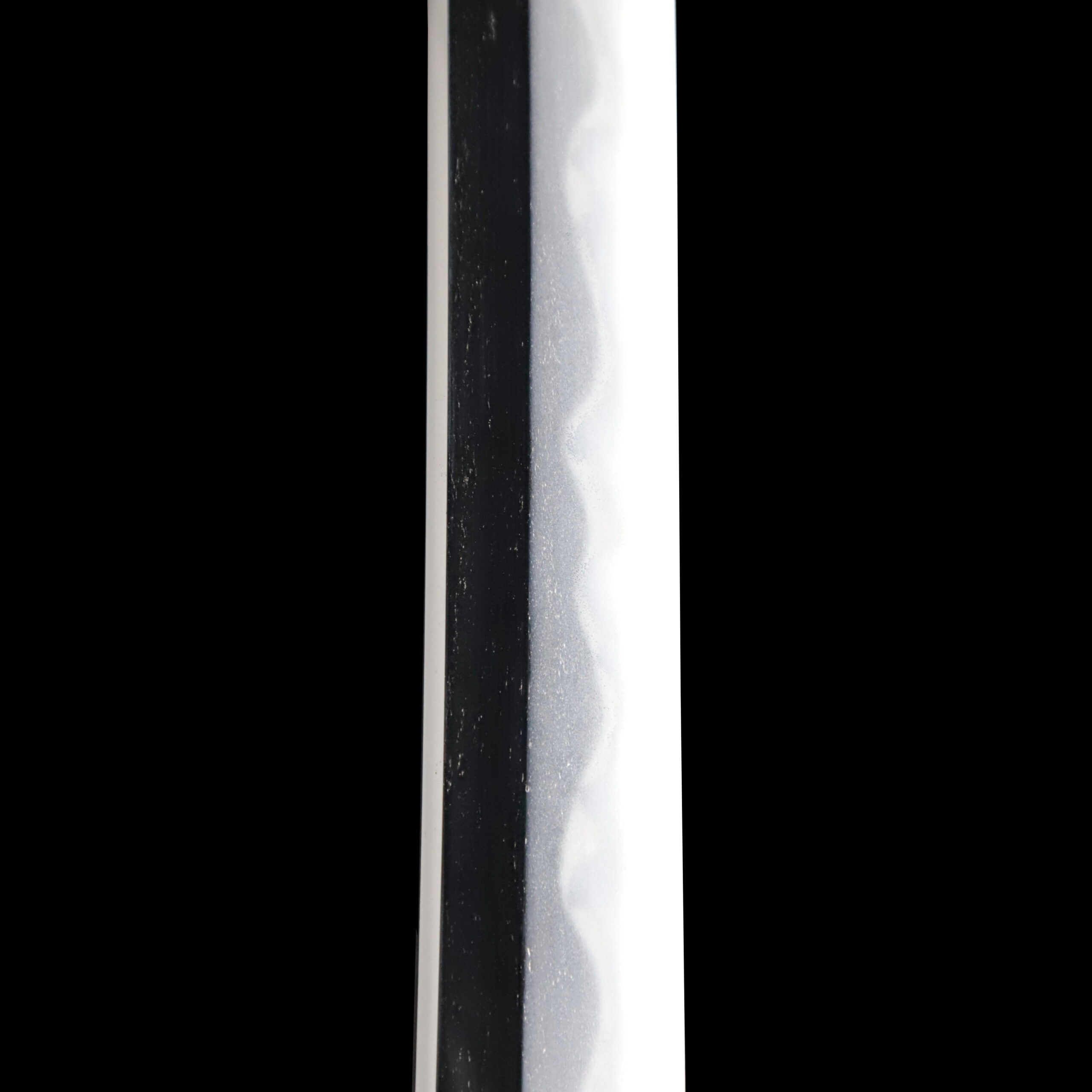
Kissaki: Kissaki is the tip of the Japanese sword.
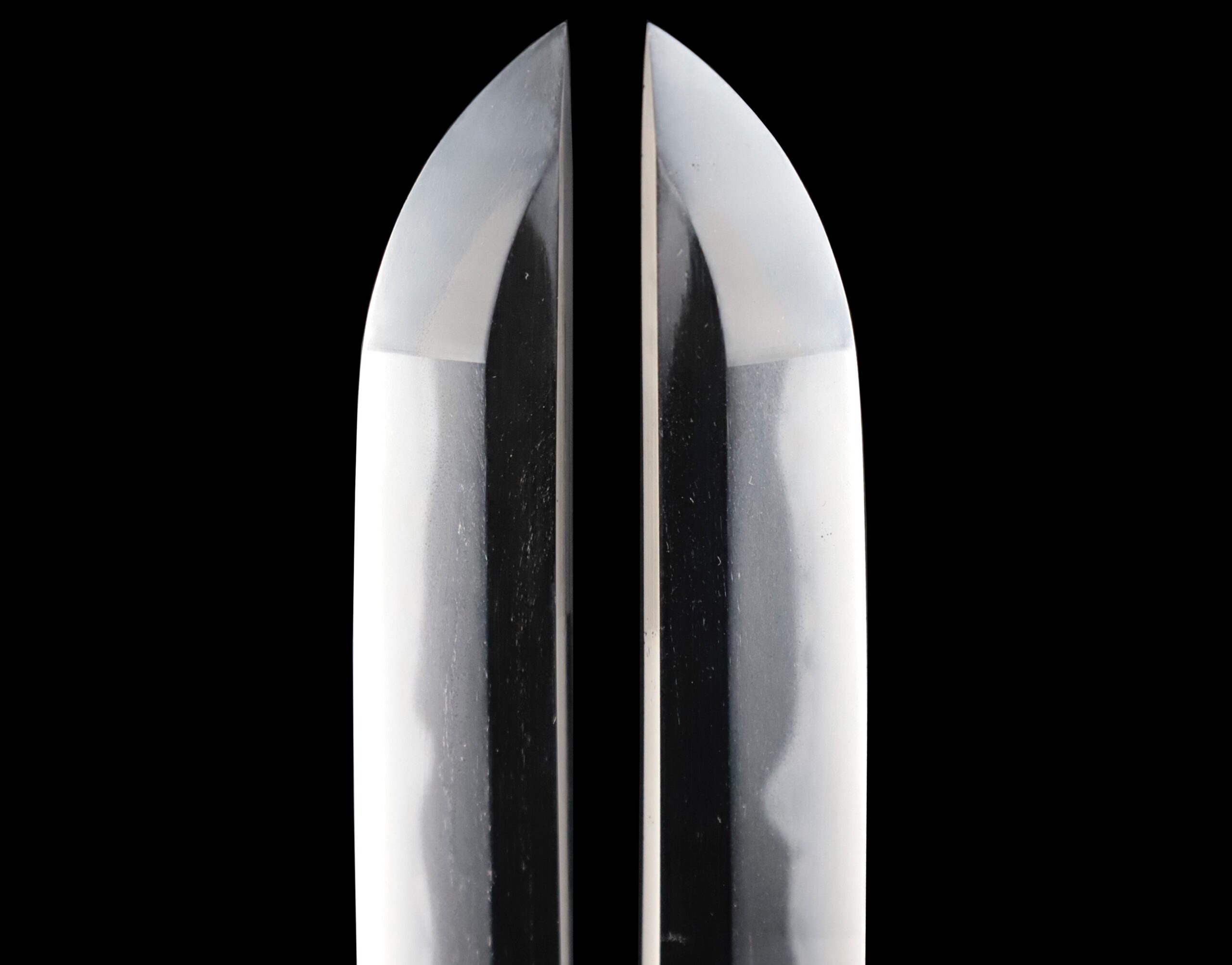
Nakago:Nakago is the tang of the Japanese sword.
Japanese swordsmiths left the black rust on the tang because it prevents red rust while the tang is in its handle. And the discoloration of the tang was created over time, and it is a great indicator for a Japanese sword specialist to estimate when the sword was forged.
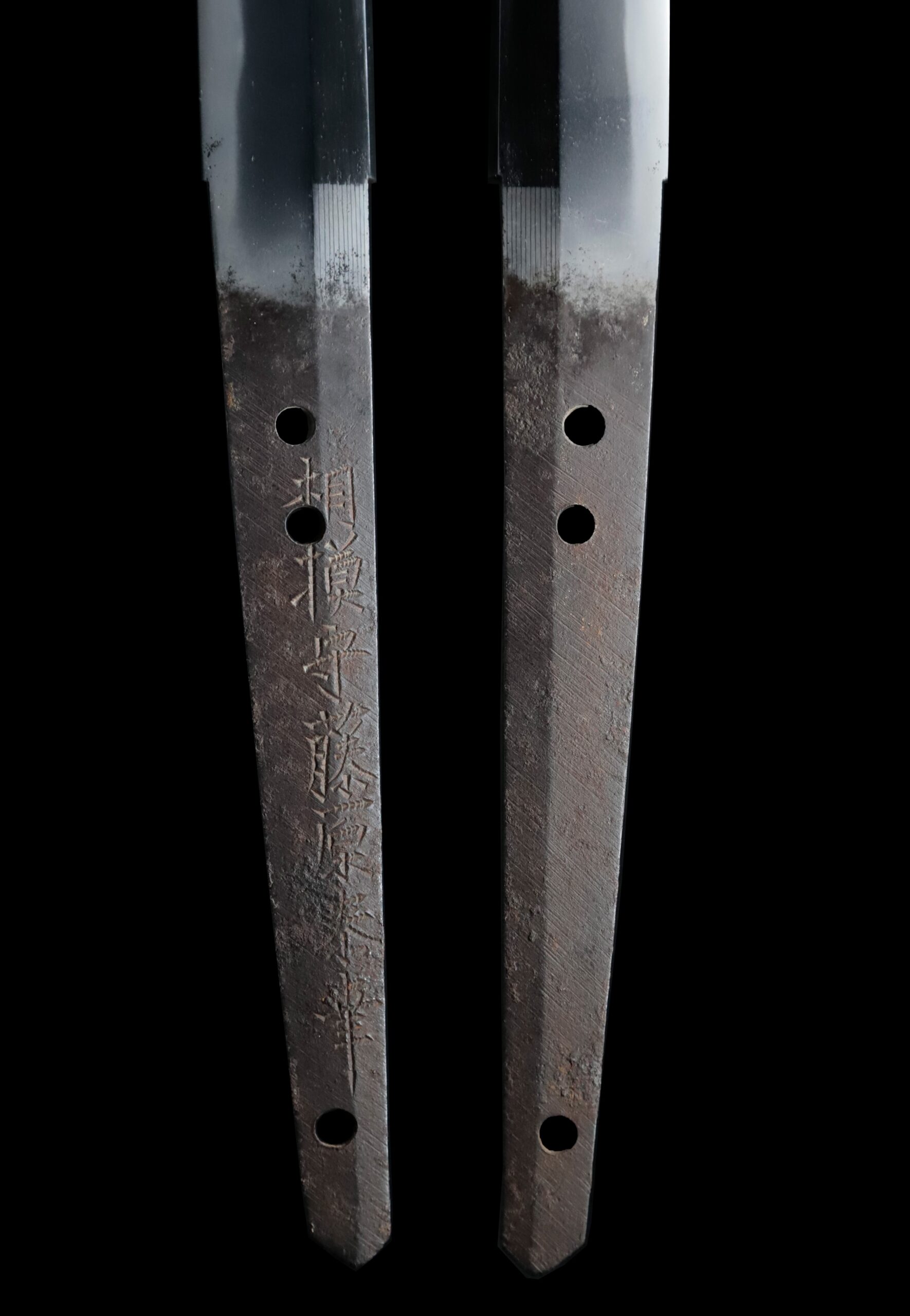
Koshirae: Koshirae is the mounting of the Japanese sword. There are several parts that consist of Koshirae such as Saya(Scabbard), Tsuka(Handle), Tsuba(Handguard).
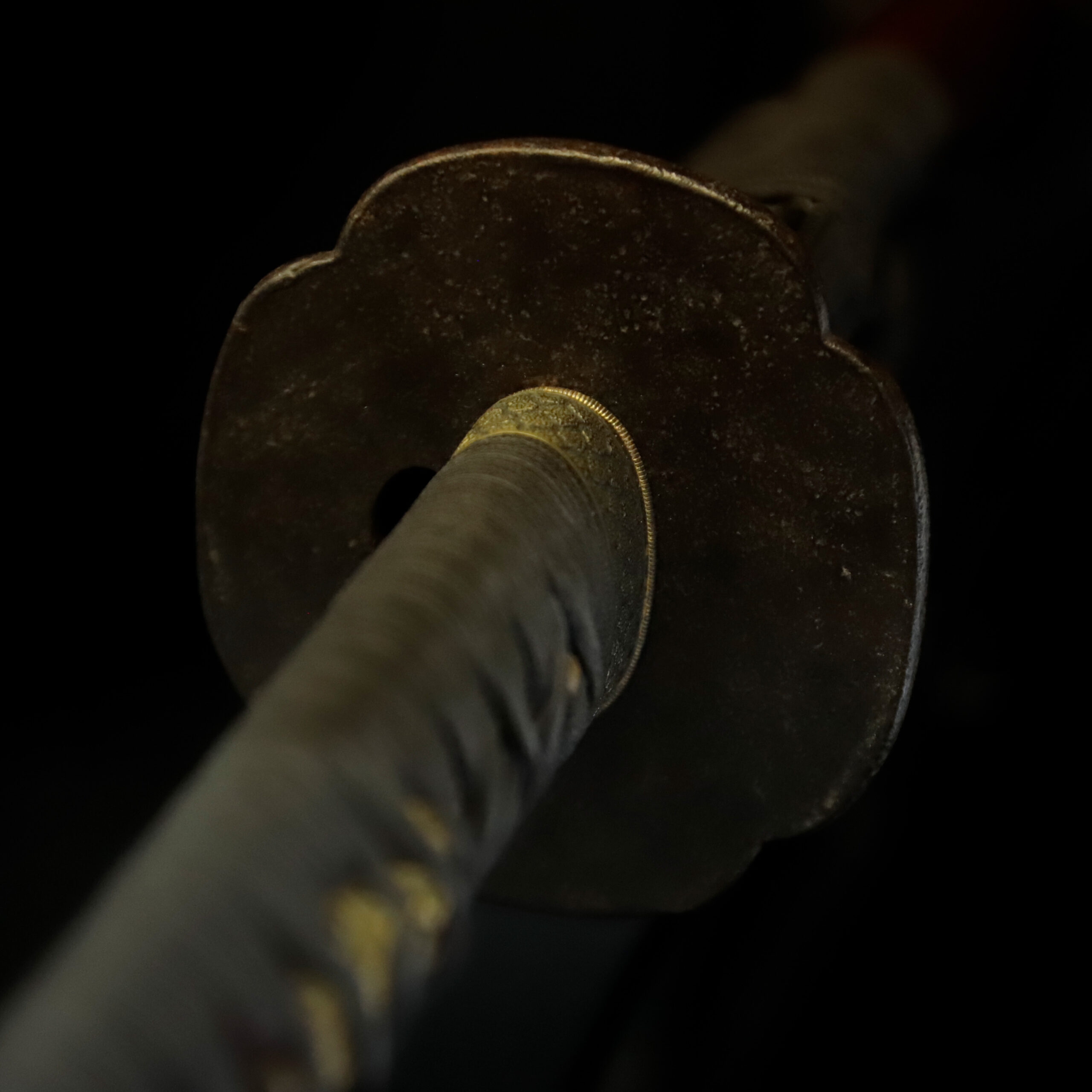
Fuchi-Kashira:A pair of matching sword fittings that cover the upper and bottom parts of its sword hilt.
This Fuchi Kashira and the Kojiri (鐺, the metal fitting that protects the tip of a scabbard) have a matching design. This design is a continuous hexagonal pattern similar to a beehive, a turtle’s shell, or dragon scales, considering the Menuki theme we will focus on later. In Japan, beehives have long been considered to ward off misfortune and prosperous business and are sometimes displayed at entrances as lucky charms. A legend also says, “If a beehive is built under the eaves, there will be no fire.” In addition, the bee is a motif that is popular worldwide as having various spiritual connotations.
The turtle’s shell pattern is called the Kikkou (亀甲) pattern. As mentioned above, it is a continuous geometric pattern connecting regular hexagons up and down. A theory says that this design was brought from China and the Korean Peninsula during the Asuka (飛鳥, 592-710) and Nara (奈良, 710-794) periods. A proverb says turtles live long lives; therefore, turtle and turtle shell patterns represent longevity. In addition, as this continuous hexagonal pattern does not get out of shape, it is said that people wished for eternal prosperity by using this design.
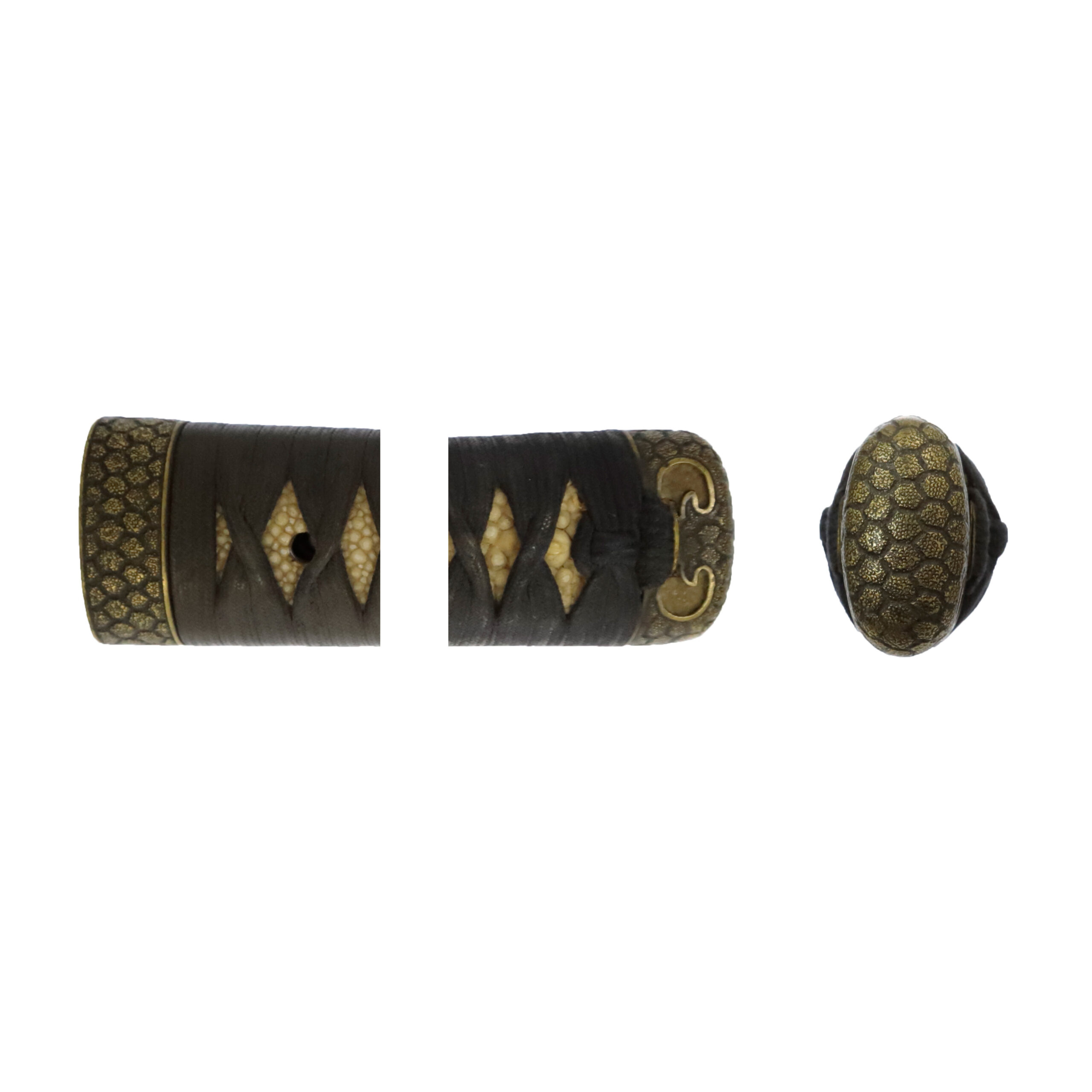
Tsuka and Menuki:Tsuka is the handle of the Japanese sword and Menuki is its decoration.
You could see the figure of the dragon through the gaps of the Tsukamaki thread. Golden paint is applied to each dragon, and this coloring remains relatively in good condition. The details, such as the dragons’ expression, scale pattern, and toes, are clearly engraved. Initially, dragons were imaginary creatures found in ancient foreign traditions or myths. Furthermore, this sacred beast is regarded as a symbol of auspicious signs. Its body is likened to nine animals: antlers are deer, the head is a camel, eyes are demons, the neck is a snake, the belly is the Mizuchi (蛟, a mythical animal in Japan that looks like a snake and has a horn and four legs), scales are fish, claws are falcons, palms are tigers, and ears are cows. It was thought that dragons would reign at the top of all animals because of their odd-looking appearance.
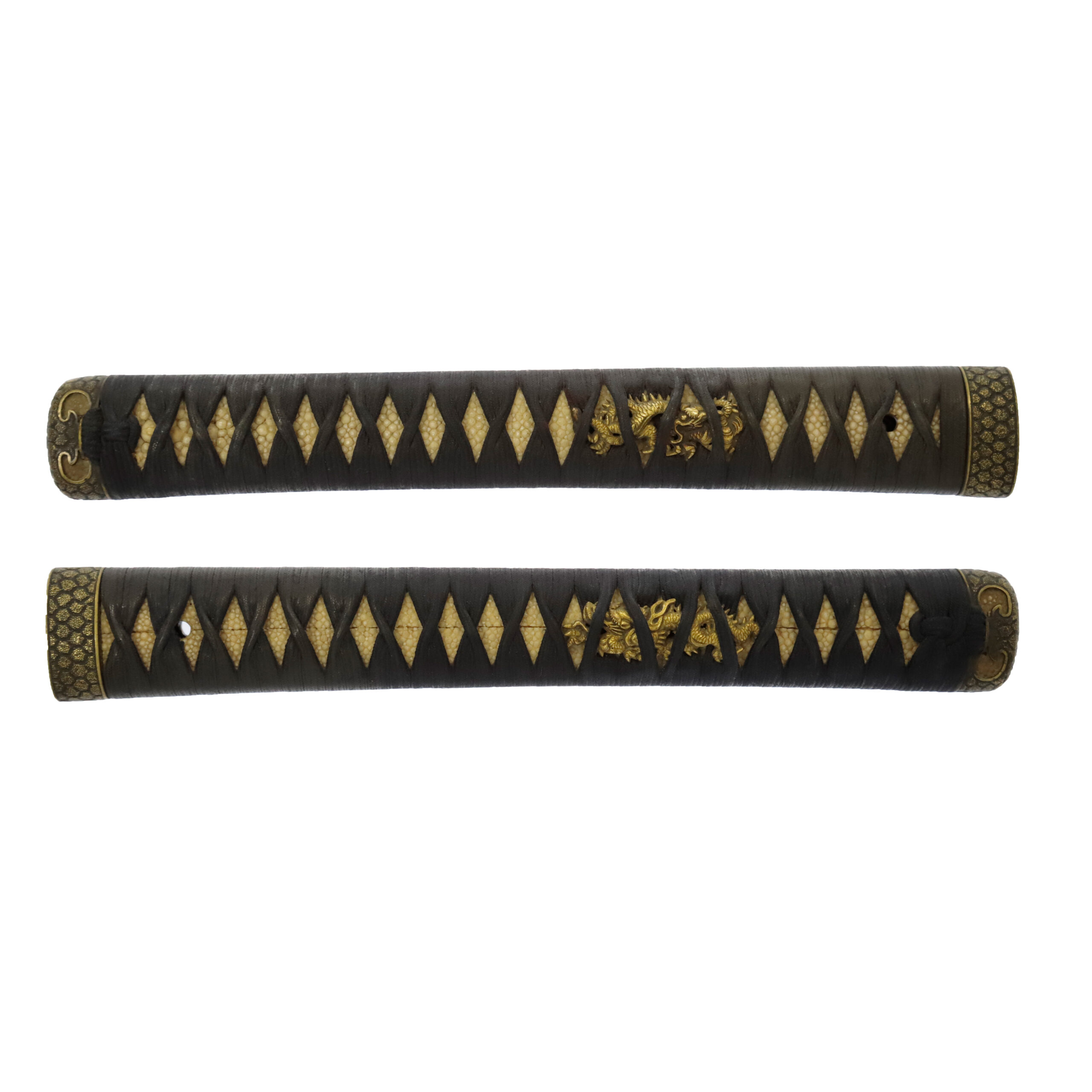
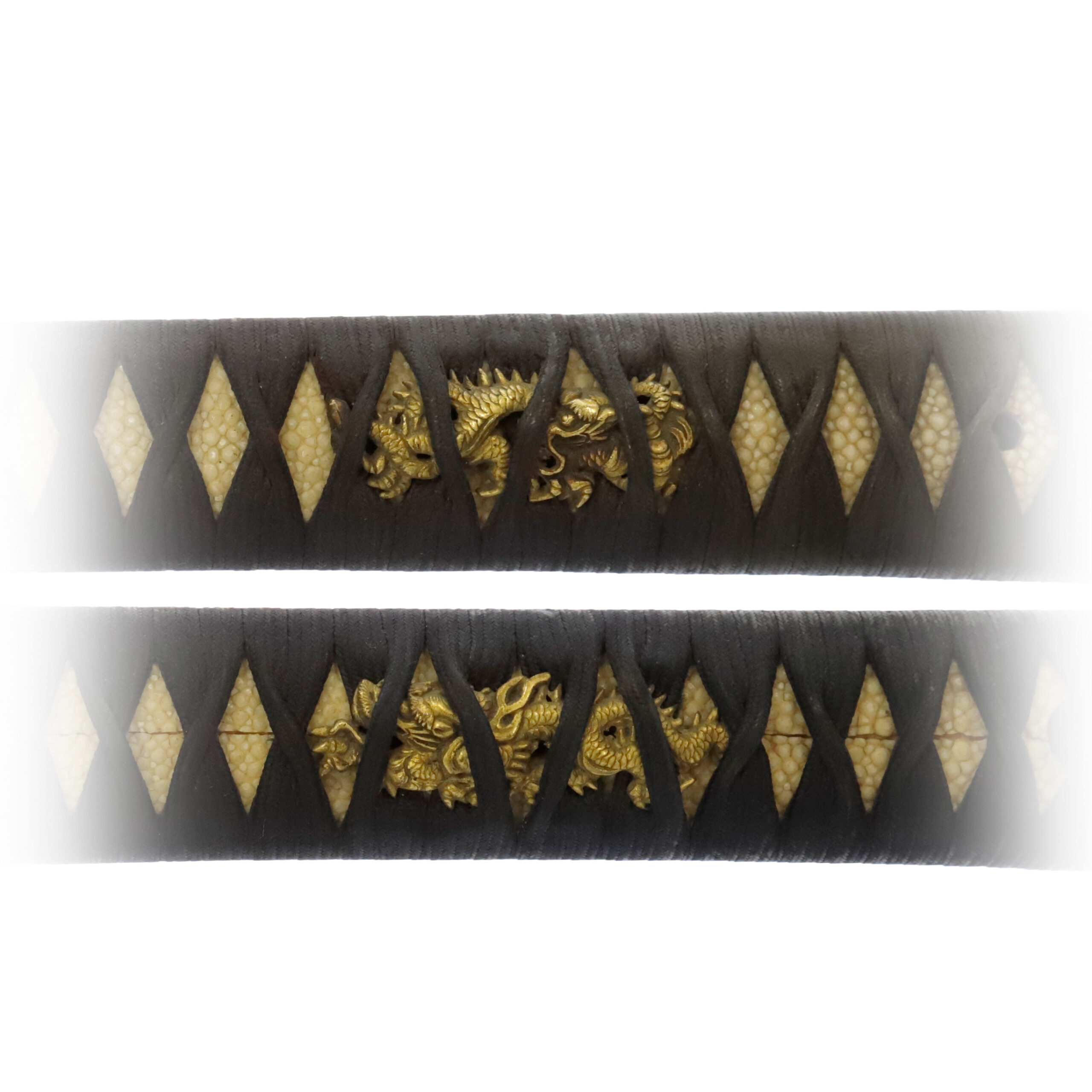
Tsuba and Habaki:Tsuba is the handguard for the Japanese Sword and Habaki is the equipment to make the blade not touch its scabbard inside. It prevents the blade from getting rusty and chipped.
This iron Tsuba has a symmetrical and simple design. A Kozuka hole is engraved on it. The shape of this Tsuba is called the Yotsu Mokkou Gata (四ツ木瓜形), which is a type of the Mokkou Gata (木瓜形). The Mimi (耳, edge) has finised a little thick to raise the edges. The Mokkou Mon has also been incorporated into family crests. This pattern is a design that has been depicted on a Mokou (帽額, cloths for decorating the hanging edge of the curtain and blinds). According to a theory, the Mokkou was named after the name of this silk cloth made of silk, “帽額 (Mokou).” Another view says that it was modeled after the cut end of a Boke (木瓜), which is a plant of the rose family. The Mokkou pattern is one of the five major family crests used in many houses. As a design to pray for the prosperity of descendants, it is speculated that many people favored its good omen.
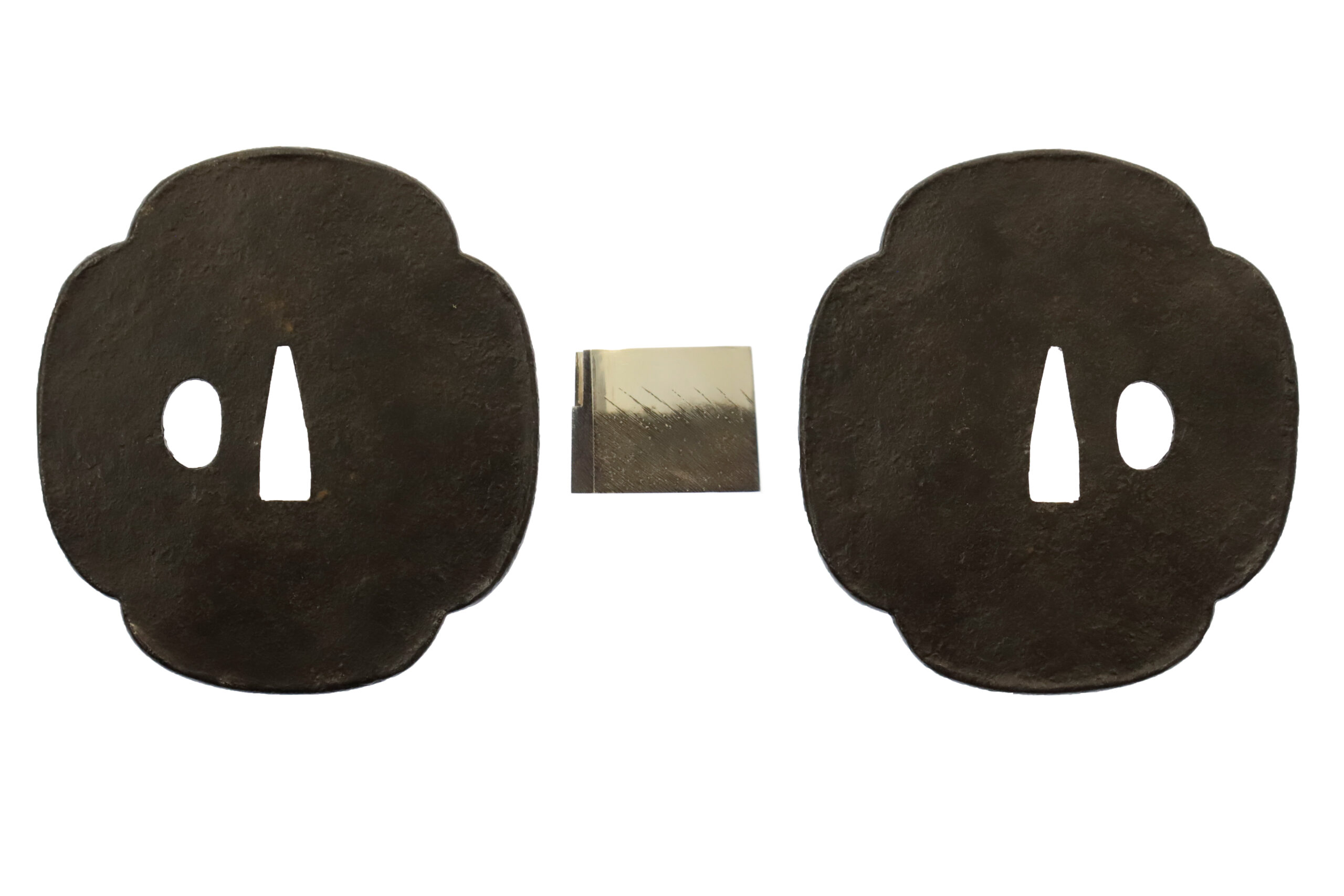
Saya: Saya is the scabbard for the Japanese sword.
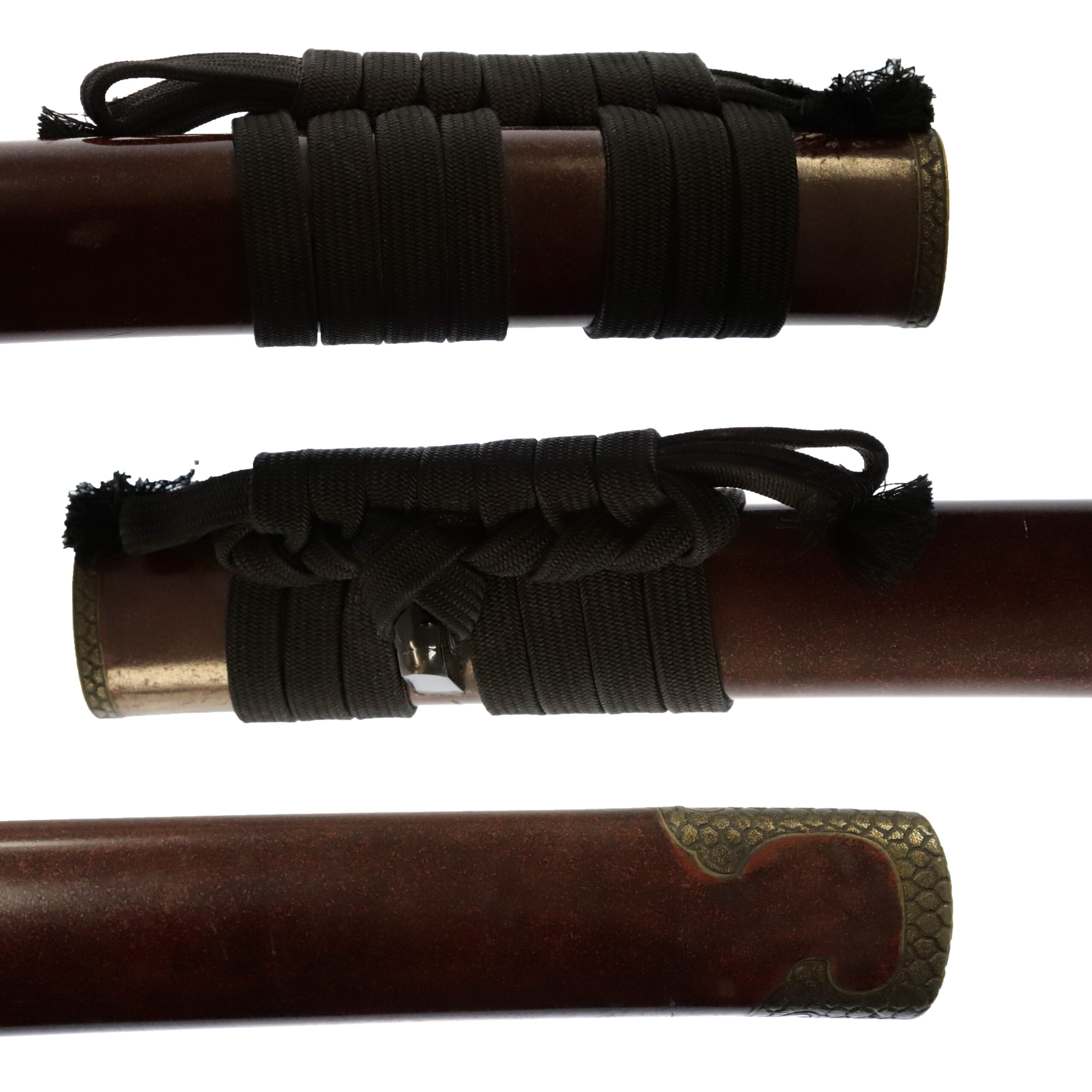
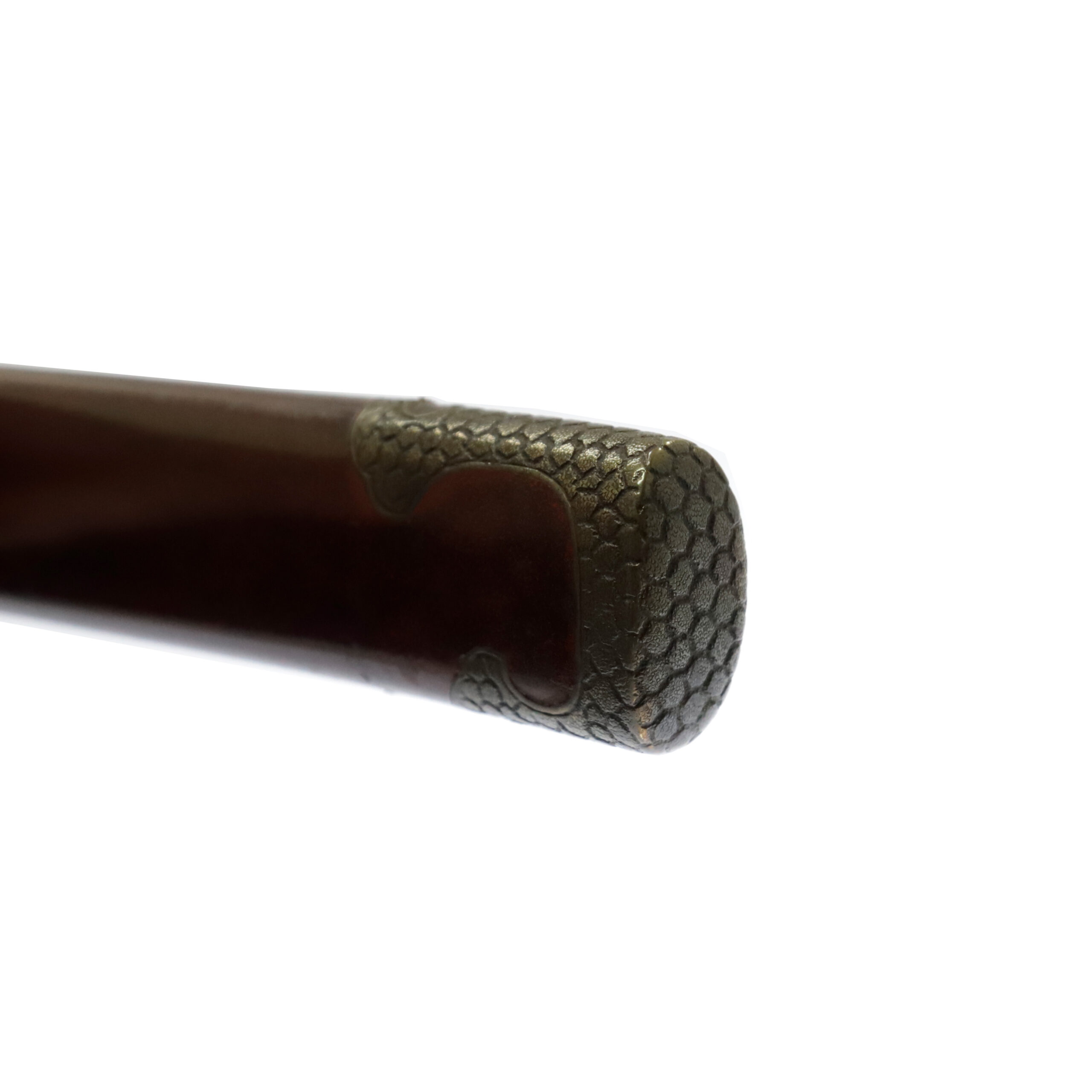
Authentication Paper:NBTHK TOKUBETSU Hozon Certificate for the blade (No. 1020376)
NBTHK, also known as Nihon Bijutsu Touken Hozon Kyokai (the Society for the Preservation of the Japan Art Sword), is one of the oldest Japanese sword appraising organizations in modern-day Japan. They authenticated the blade on May 31th in the 5th year of Reiwa (2023). They appraised it as Tokubetsu Hozon Touken, the blade especially worth preserving for Japanese society. The purchaser will receive this original certificate as well. We can also translate what is written into English and make a PDF file for your record if you request.
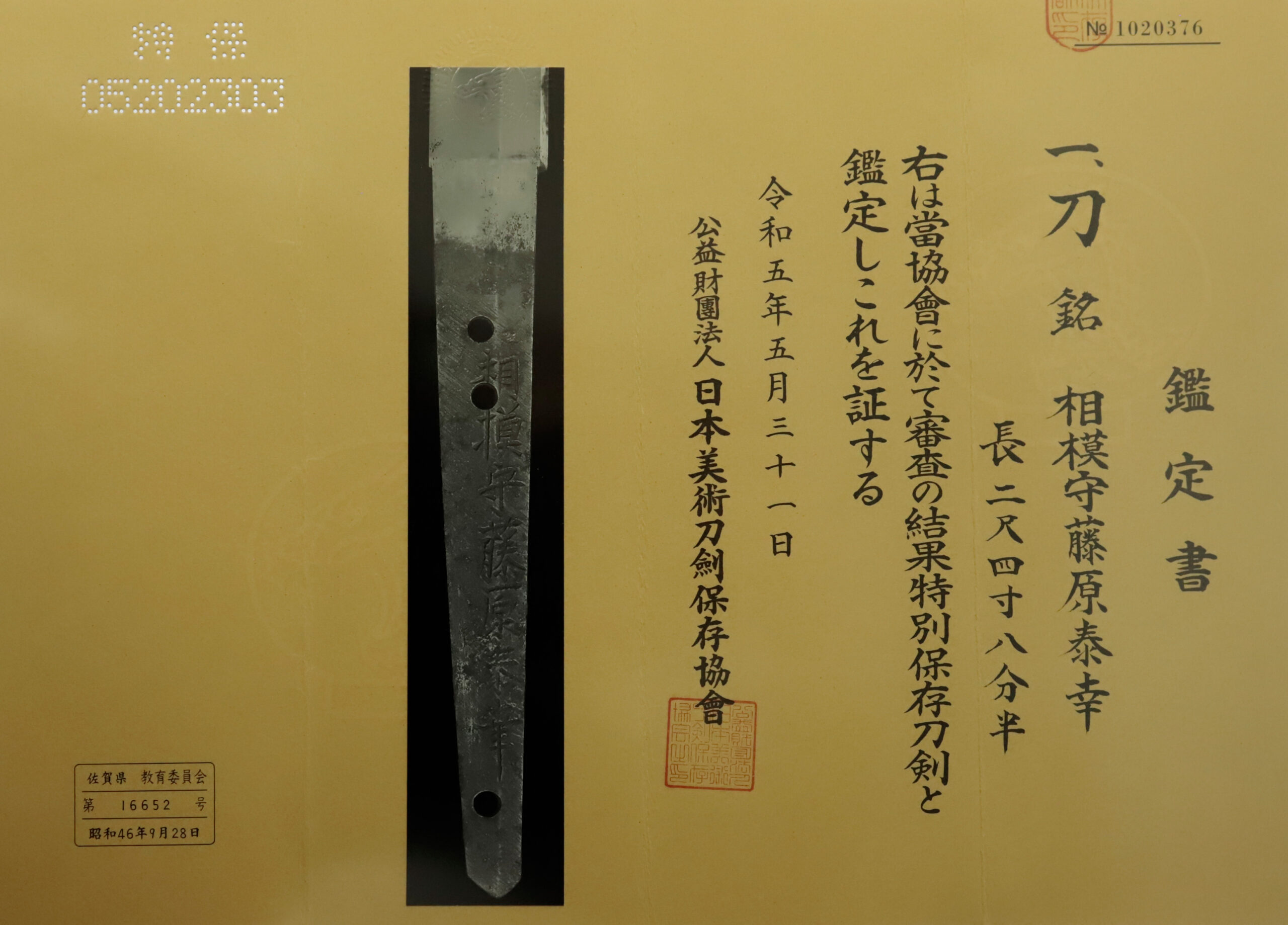
Registration Number : Saga 16652
The Board of Education in Saga prefecture issued a registration paper for this sword . It is called Jyu Token Rui Torokusho(銃刀剣類登録証). Bunkacho(The Agency for Cultural Affairs) acknowledges a Japanese sword with this paper as a work of art.
The sword needs to be traditionally hand-forged and made of Tamahagane carbon steel to be registered in the system. With this paper, its owner in Japan can legally own an authentic Japanese sword. Based on this registration number, we will apply for its export permit.
This paper will need to be returned to the board of education when the sword is being shipped abroad, but you can receive a copy of it. An English translation of this registration paper is available on request.
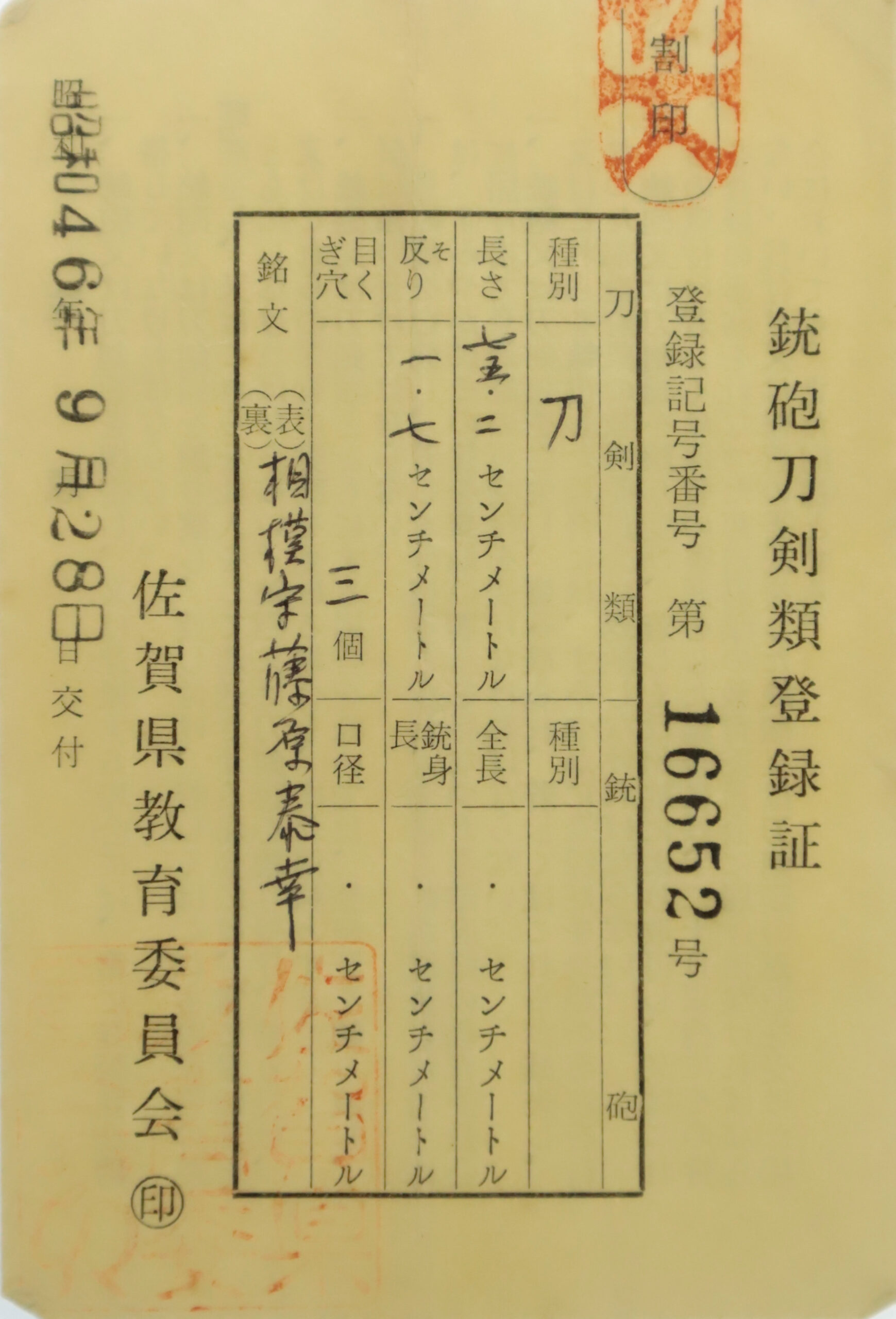
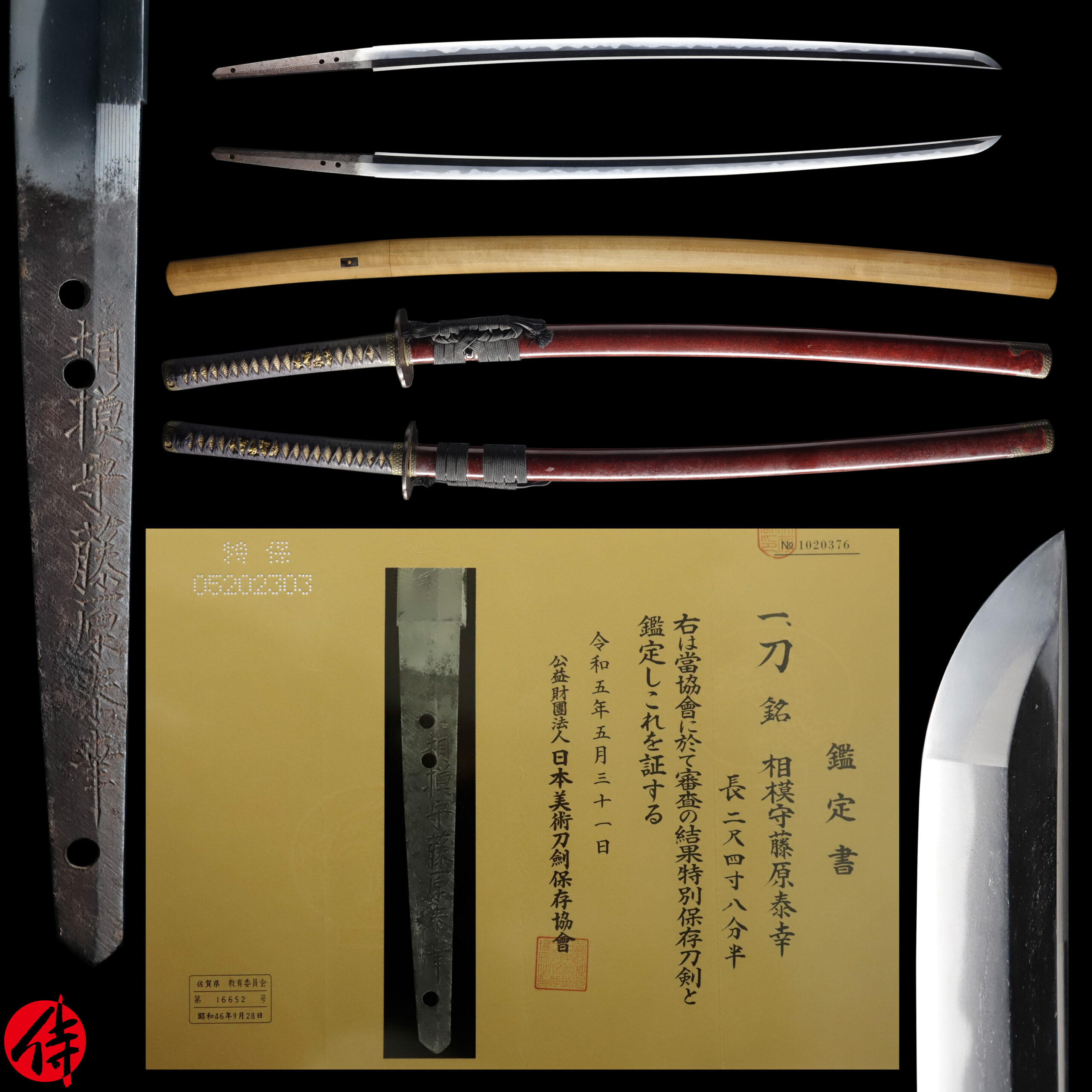
—————————————————————–
【About us】
Samurai Museum is located in Tokyo, Japan, exhibiting antique artifacts related to the Samurai history. Samurai Museum Shop is the place for those who are interested in Japanese culture and craftsmanship. We deal with antique Samurai swords/armor, traditional crafts made in Japan and so on.
【Japanese Sword& Export Process】
The Japanese swords we deal with are hand-forged edged swords made in Japan. It was made from the traditional carbon steel called TAMAHAGANE(玉鋼). Samurai Museum is familiar with the proper legal procedure for an antique/ authentic Japanese sword to be exported from Japan. We have sent more than 700 Japanese swords for the past few years (~2024) to amazing owners who appreciate its historical value.
Each Japanese sword is registered under the Agency for Cultural Affairs and the Board of Education in Japan. They issue a registration paper for each Japanese sword for its owner in Japan to legally possess it. The Japanese sword with its registration paper means it was traditionally hand-forged in Japan.
To legally export the sword from Japan to other countries, we will have to apply for its permit to the Agency for Cultural Affairs(Bunkacho) and return the original registration paper to the Board of Education. It normally takes around 2-4 weeks to receive this permit after submitting required documents. And we would like you to expect at least 1-1.5 months for your order to arrive at your given address after you ordered. For more detailed info, please click here.
It is allowed for residents in Japan to own authentic Japanese swords without a special license as long as they come with registration papers. Please feel free to contact us if you are a resident of Japan, whether temporarily or permanently. We will also assist you when you leave Japan and need to obtain the export permit.
【Payment Method】
We accept payment through Stripe (Credit card), PayPal, Apple Pay or ChromePay, all of which are secure payment methods. Also, you don’t need to make an account on Stripe for the checkout. If you prefer other payment method, please contact us. After confirming your payment, we will apply for an export permit. You may either pay in JPY, USD, AUD, CAD,EUR CHF or GBP. The price is set in Japanese Yen. Prices in other currencies are automatically calculated based on the latest exchange rate.

* If the amount is above 1 million JPY, Stripe or wire transfer will be the only options for payment.
【Shipping】
We have shipped authentic Japanese swords to the USA, UK, Canada, Mexico, Germany, France, Hong Kong, Finland and Australia. If you don’t live in these countries and like to order, please contact us first before making a purchase. We offer Free International Shipping as long as we can send antique Japanese swords by EMS.
We normally ship by EMS(Express Mail Service) provided by Japan Post. We will send you a tracking number for your order as soon as we hand it to the post office. We will put 100 % insurance on the shipping document without any extra charge. Based on the total amount, there might be a duty tax or other fee for you to pay, depending on the countries. We use package cushioning to protect the item and put it in a PVC pipe, which is one of the most secure packages because of its durability.
It will normally takes 5-14 days for the item to arrive at your given address after we dispatch it. Time of delivery is estimated as accurately as possible by the carrier but does not take into account any delays beyond our control such as by inclement weather, post office holiday seasons.
* If you live in Australia and like to purchase an authentic Japanese sword, please click here to know the detail.

【Review】
Here is one of the reviews we received from a customer who purchased an authentic Japanese sword from us. For more reviews, please click here.
“My experience overall with the whole process was wonderful. I had many questions about the history and process to purchase these treasures. All my questions were answered very timely and complete. The staff is very knowledgeable and very well versed if any questions do arise.”
【How to make sure the condition】
Please keep in mind that what you are going to purchase is an antique item. We uploaded high resolution photos for you to check its condition thoroughly. If you like to see more photos with different angles, please feel free to contact us. We will be happy to send them to you so that you can make informed decision. It is essential for us to know that you are happy with your choice of a sword. and we are prepared to use the best of our ability to serve you.
【How To Contact Us】
Please contact us through email, Facebook Messenger or Live Chat if you have any questions. You can find each icon on the right side of the website. Please click one of them to reach us. We will reply to you within 1-2 business days.
【The Art of Nihonto (Japanese Sword)】
Samurai’s history is a profound, eloquent legacy of ancient Japanese warriors in which millions of people worldwide are being fascinated. If you like to find out the art of Nihonto, please click here.
【A Guide to Japanese Sword Maintenance】
After acquiring an genuine Japanese sword, it is also important to know how to take good care of it. Here is the special video for you. Mr. Paul Martin, Japanese sword expert, shows you how to give proper maintenance to your sword. By mastering how to clean the Japanese sword, its aesthetic beauty will last forever.
When you purchase a Japanese sword from us, you can get a Free Japanese sword maintenance kit. It comes with four tools(Choji Oil, Uchiko Whetstone Powder, Peg remover, Oil Applicator). By watching the video instruction above , you can enjoy learning how to maintain your Japanese sword while appreciating it. If you have any difficulty assembling the sword or cleaning the blade, you can feel free to contact us.


MORE ANTIQUE JAPANESE SWORD FOR SALE
SWORDS WITHOUT CERTIFICATES FOR SALE
LEARN JAPANESE SWORD TERMINOLOGY
Thank you for reading all the information on the page. If you have any difficulty choosing the right Japanese sword for you, we will be more than happy to help you find the one that speaks to you the most. Please feel free to contact us.
